Tom's Hardware Verdict
The Phanteks AMP Series model with 650W capacity offers high performance and quiet operation.
Pros
- +
Full power at 47 degrees Celsius
- +
High build quality
- +
Satisfactory performance
- +
Quiet operation
- +
Fully modular (with 2x EPS connectors)
- +
Compact dimensions
Cons
- -
Low 5VSB efficiency
- -
Transient response at 3.3V
- -
Low efficiency with 2% load
- -
Small distance between the 4-pin Molex connectors
Why you can trust Tom's Hardware
The Phanteks AMP Series 650W offers strong performance, excellent build quality and silent operation. All the above are provided at a fair price, so this product follows keeps up with its direct competitors in this wattage category, namely the Seasonic Focus Plus Gold with similar capacity (GX-650) that uses the same platform and the Corsair RM650x.
The Phanteks Amps line consists of three models with their capacities ranging from 550W to 750W. All are fully modular and are certified by both 80 PLUS and Cybenetics, so besides the 80 PLUS Gold badge, the PH-P650G also has the ETA-A and LAMBDA-A+ efficiency and noise badges, respectively.
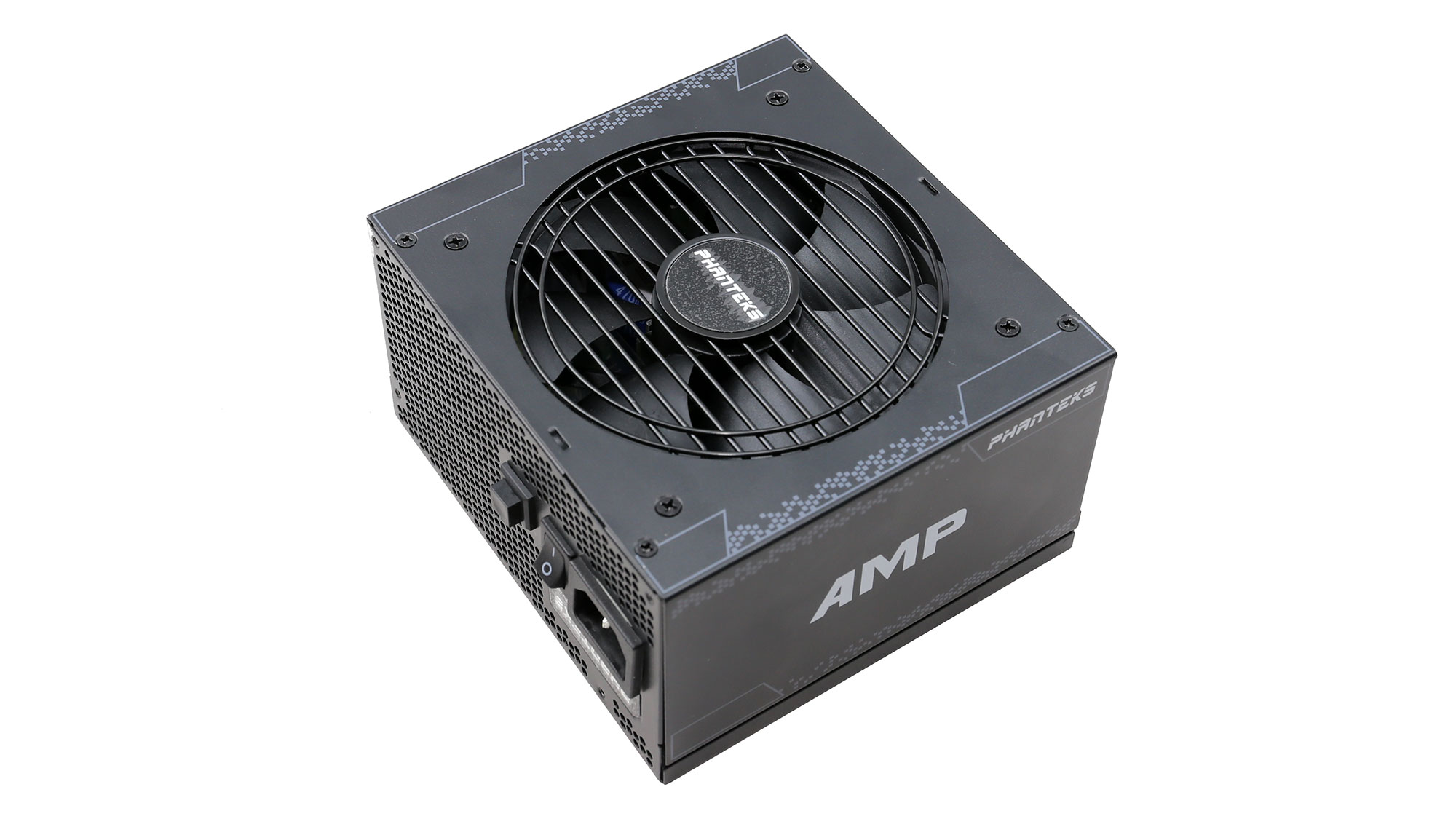
Product Photos

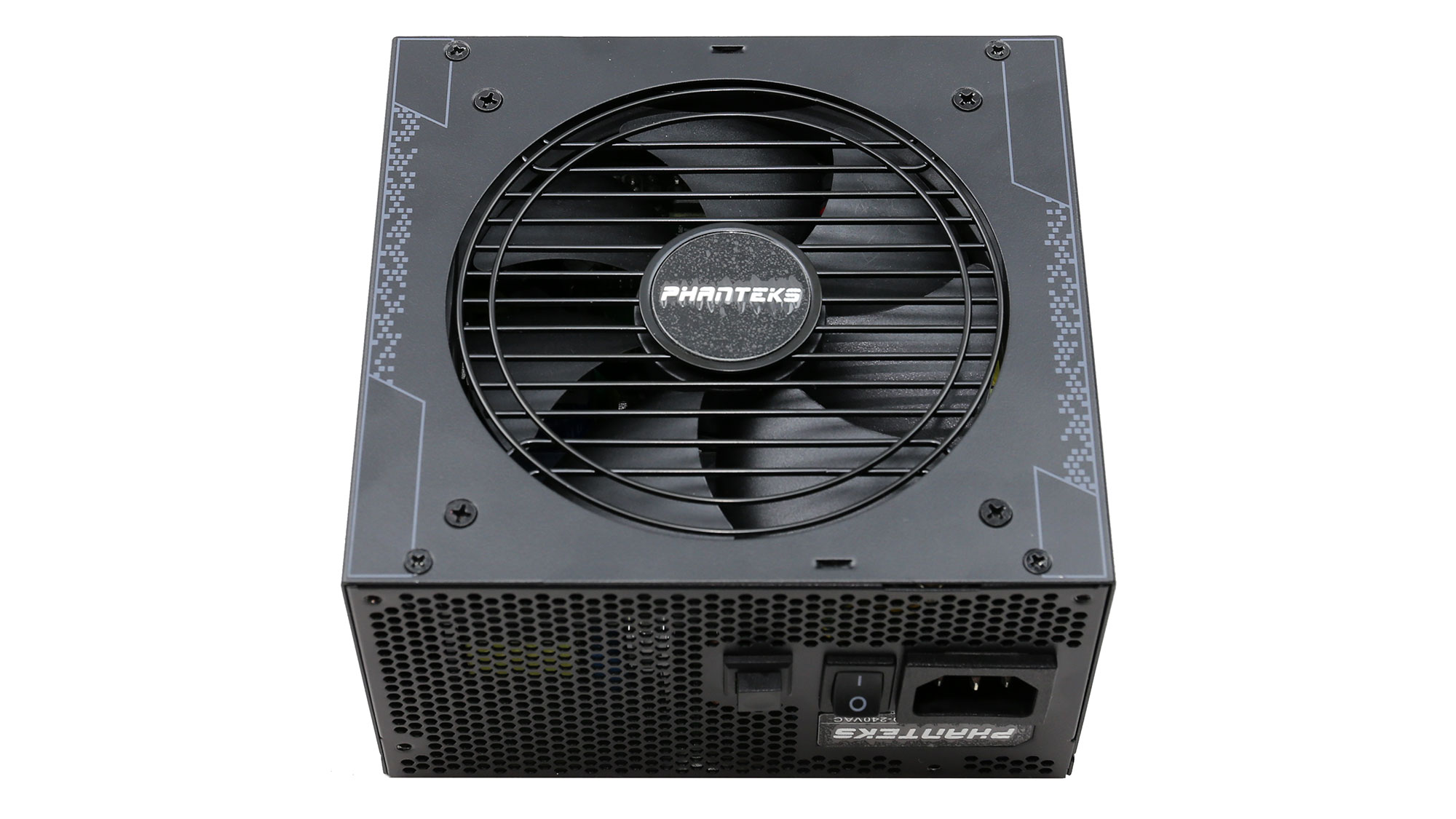
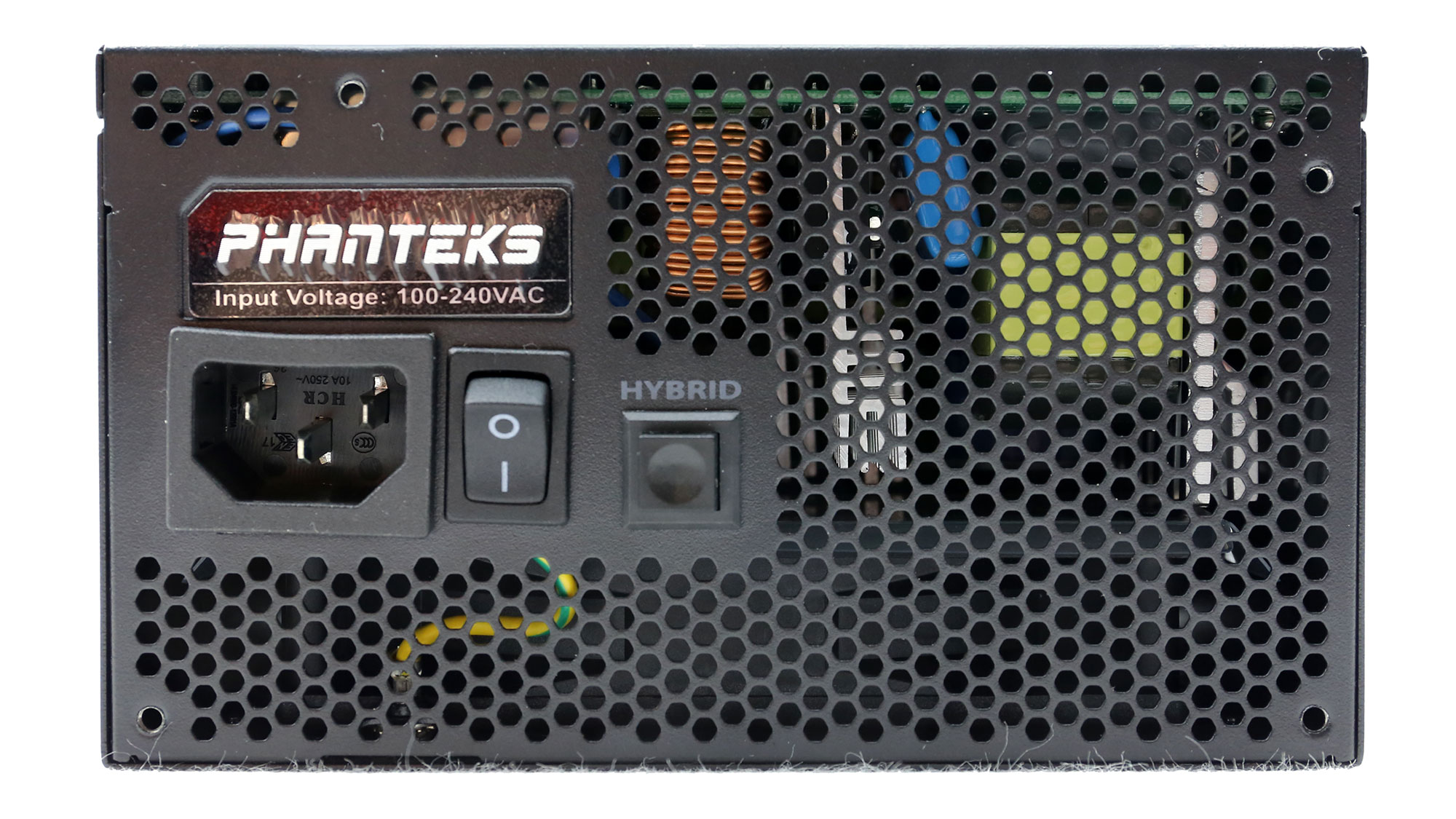


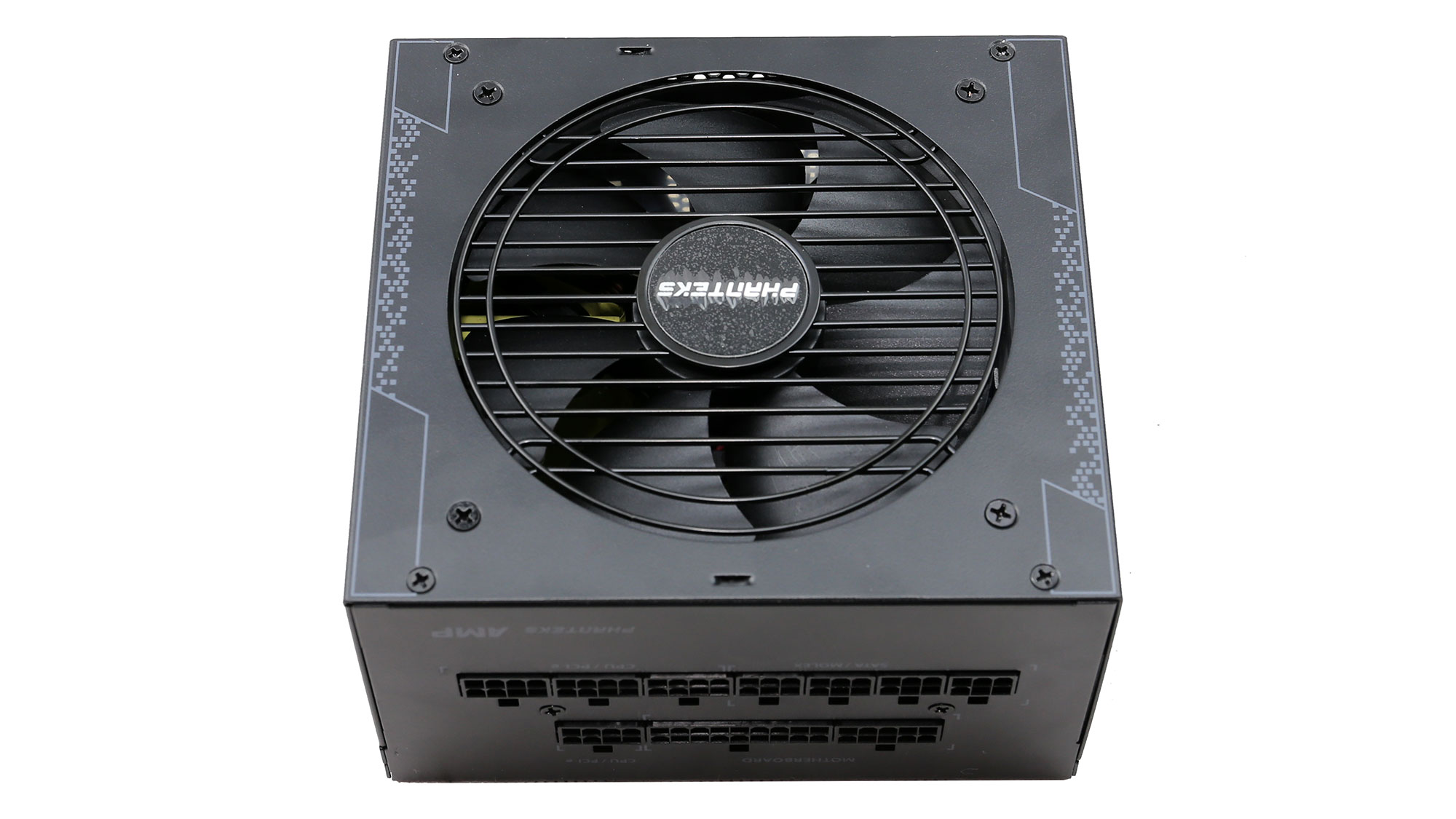

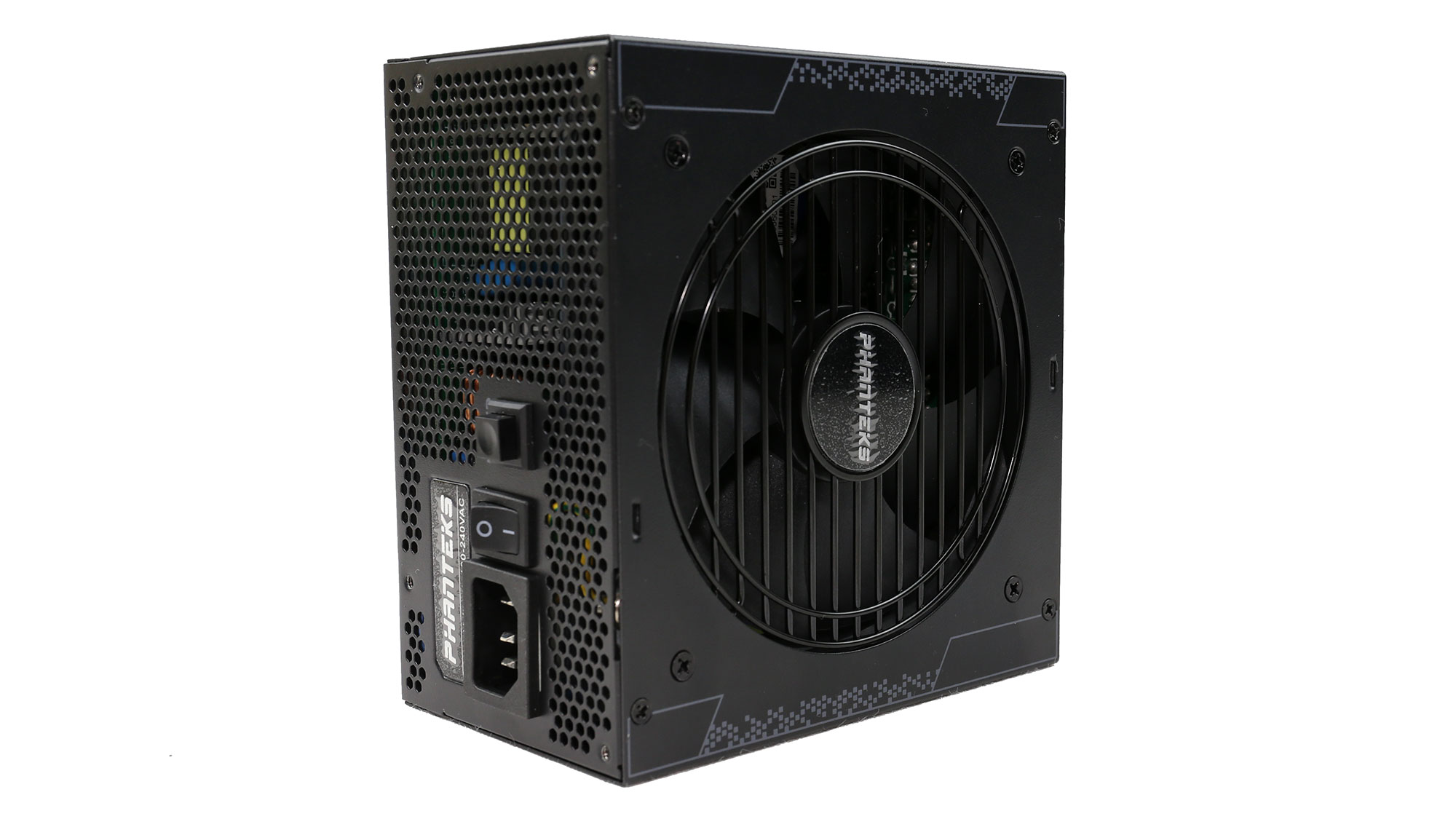
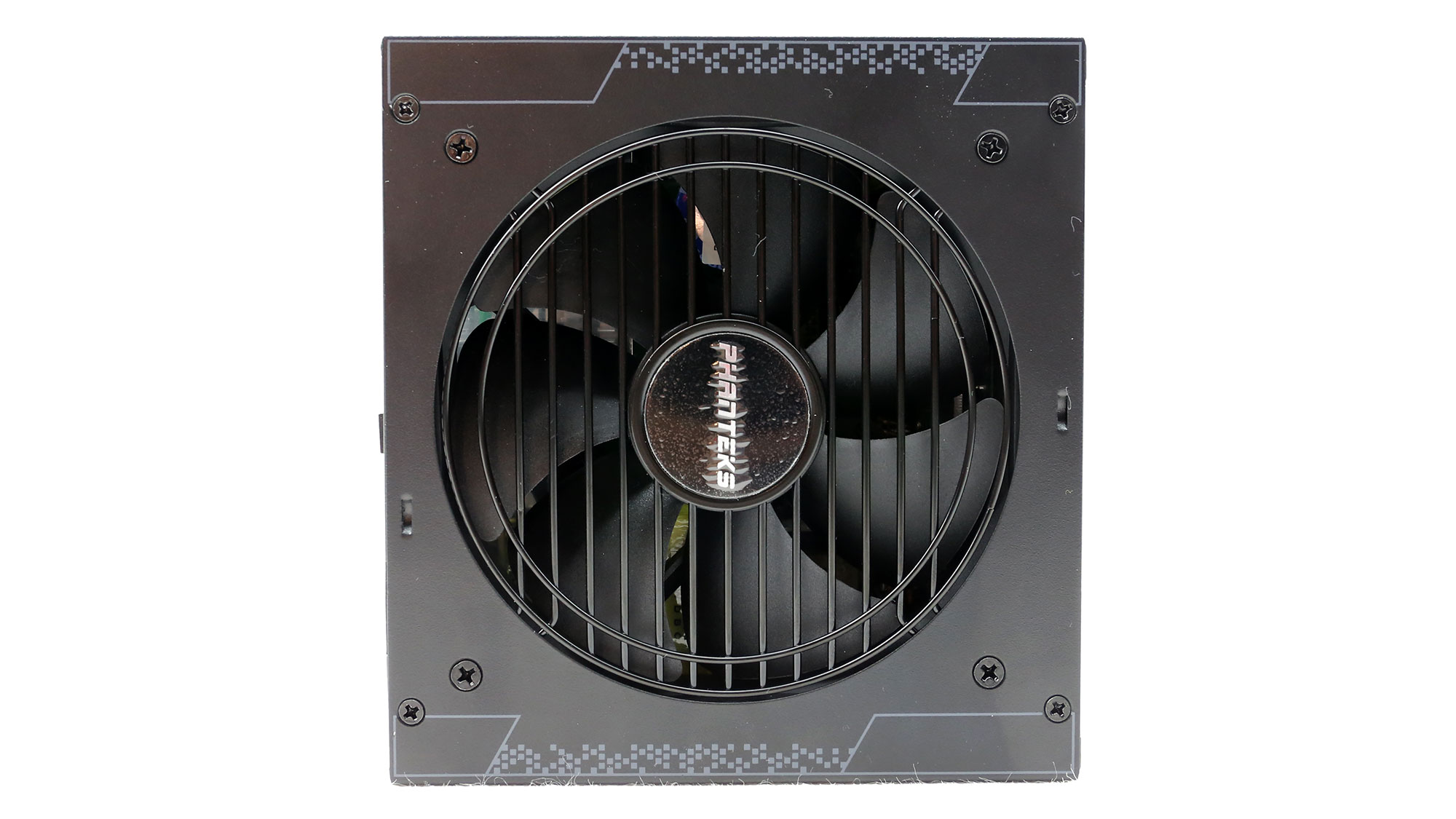
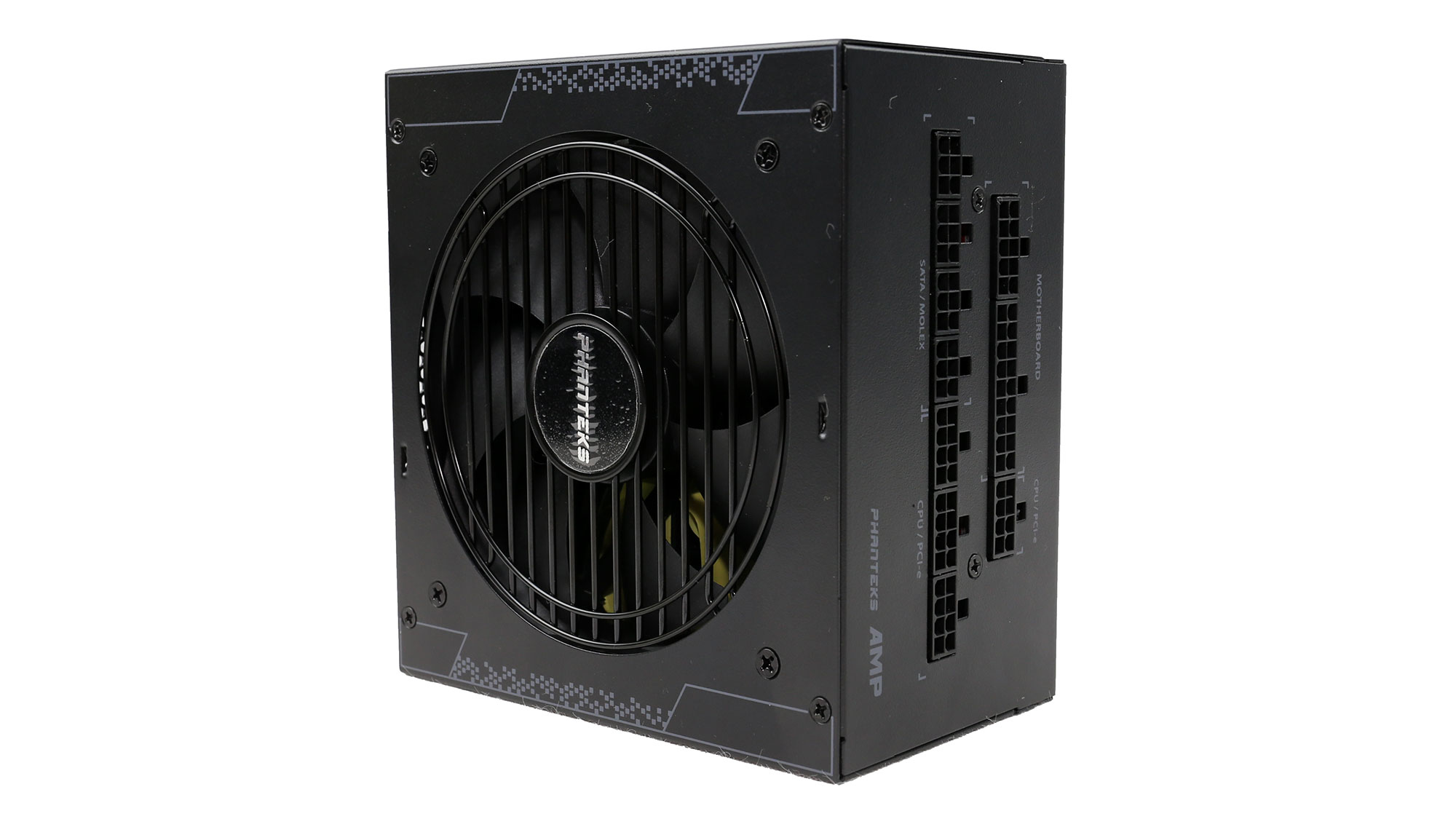
All Phanteks AMP models use the new Focus Plus Gold platform, which is also used in the fresh Seasonic GX models. This platform is reliable and offers good performance, so we have high expectations from today's review unit, the PH-P650G.
Despite the super-compact dimensions, the have PH-P650G is equipped with two EPS and four PCIe connectors, so it will easily keep up with a potent system, as long as you don't try to power a pair of previous AMD GPUs with it (e.g., VEGA 56/64). If you don't need a second GPU, the PH-P650G is able to handle extremely power-hungry processors like AMD's Threadripper CPUs, which can draw more than 250W of power, and this is why the corresponding mainboards require a pair of EPS connectors.

Product Photos
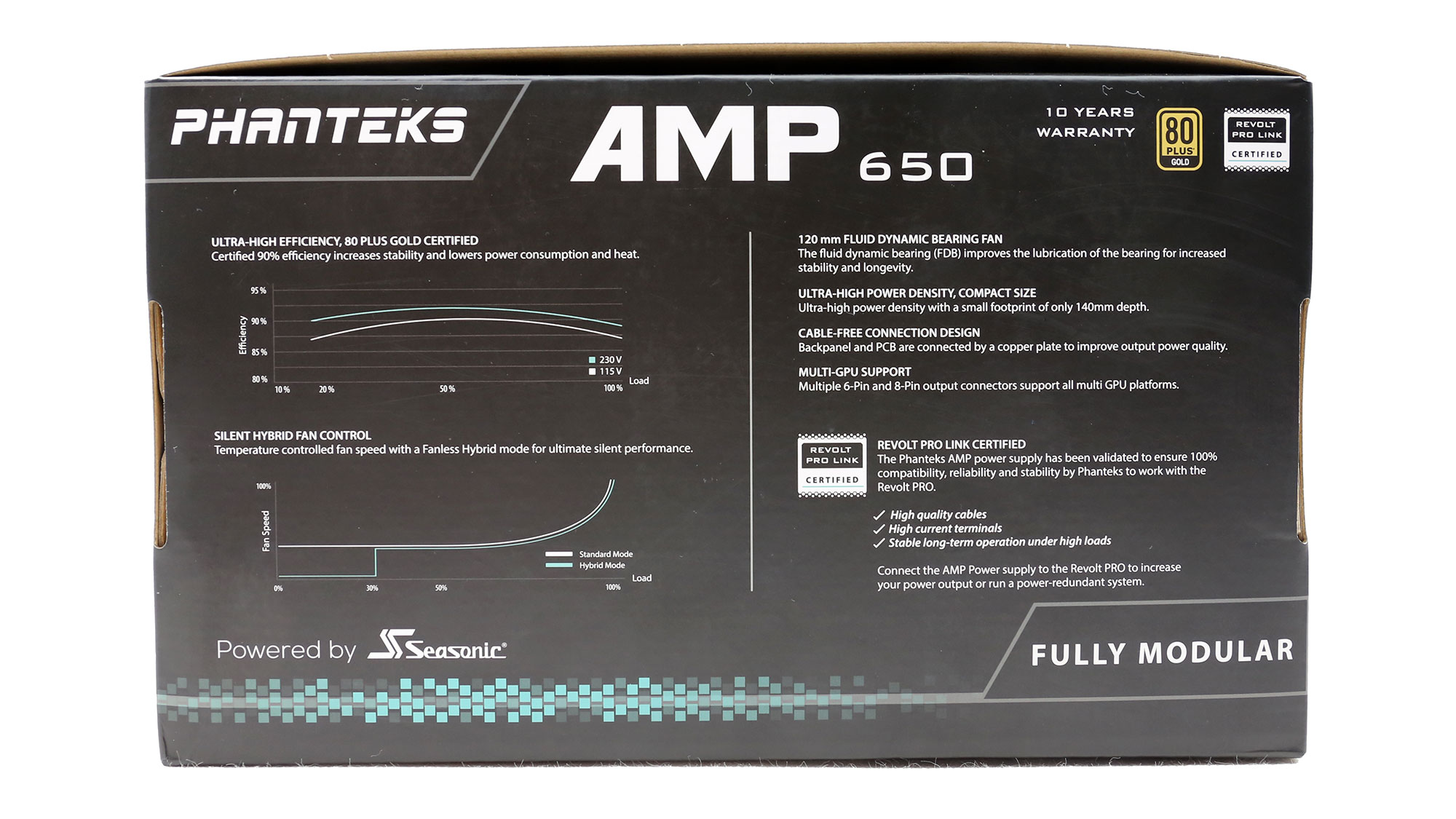
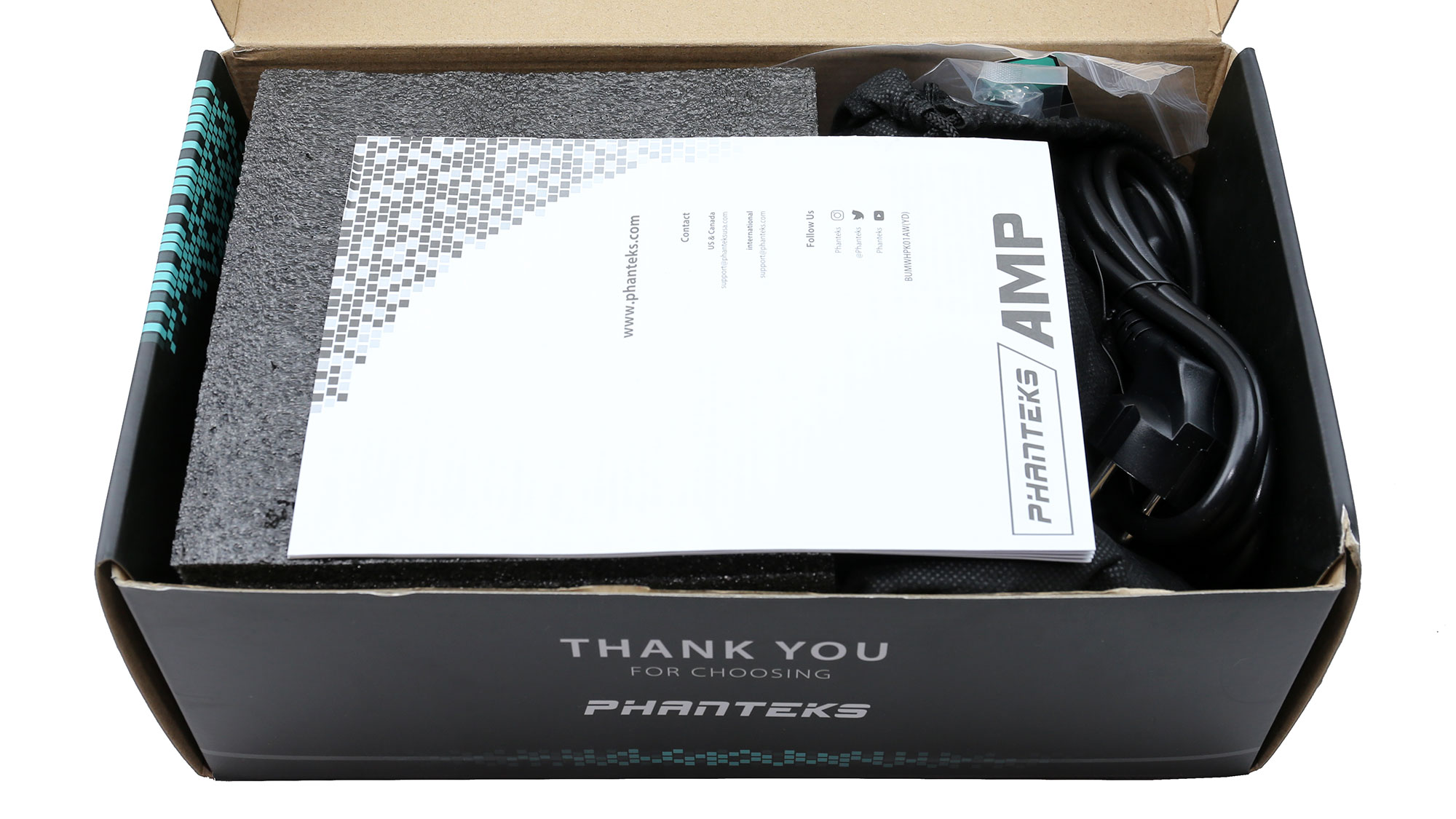

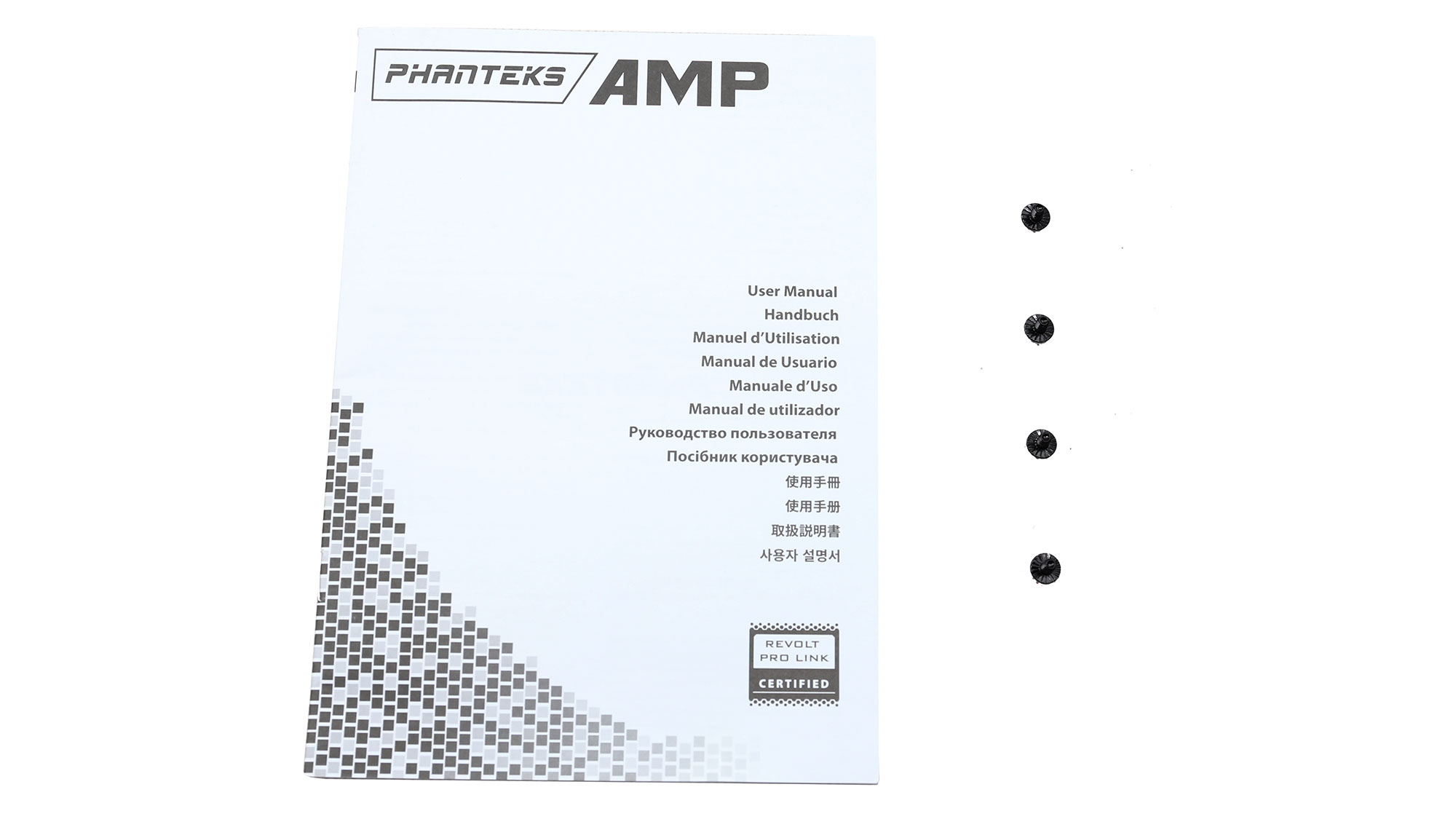


Specifications
|
Manufacturer (OEM) | Seasonic |
|
Max. DC Output | 650W |
|
Efficiency | 80 PLUS Gold, ETA-A (88-91%) |
|
Noise | LAMBDA-A+ (15-20 dB[A]) |
|
Modular | ✓ (Fully) |
|
Intel C6/C7 Power State Support | ✓ |
|
Operating Temperature (Continuous Full Load) | 0 - 50°C |
|
Over Voltage Protection | ✓ |
|
Under Voltage Protection | ✓ |
|
Over Power Protection | ✓ |
|
Over Current (+12V) Protection | ✓ |
|
Over Temperature Protection | ✓ |
|
Short Circuit Protection | ✓ |
|
Surge Protection | ✓ |
|
Inrush Current Protection | ✓ |
|
Fan Failure Protection | ✗ |
|
No Load Operation | ✓ |
|
Cooling | 120mm Fluid Dynamic Bearing Fan (HA1225H12F-Z) |
|
Semi-Passive Operation | ✓ (selectable) |
|
Dimensions (W x H x D) | 150 x 85 x 140mm |
|
Weight | 1.55 kg (3.42 lb) |
|
Form Factor | ATX12V v2.4, EPS 2.92 |
|
Warranty | 10 Years |
Power Specifications
| Rail | 3.3V | 5V | 12V | 5VSB | -12V | |
|---|---|---|---|---|---|---|
| Max. Power | Amps | 20 | 20 | 54 | 3 | 0.3 |
| Watts | 100 | 648 | 15 | 3.6 | ||
| Total Max. Power (W) | 650 |
Cables and Connectors
| Modular Cables | Cable Count | Connector Count (Total) | Gauge | In Cable Capacitors |
|---|---|---|---|---|
| ATX connector 20+4 pin (610mm) | 1 | 1 | 18-22AWG | Yes |
| 4+4 pin EPS12V (650mm) | 2 | 2 | 18AWG | No |
| 6+2 pin PCIe (680mm+80mm) | 2 | 4 | 18AWG | No |
| SATA (420mm+150mm+150mm+150mm) | 2 | 8 | 18AWG | No |
| SATA (300mm+150mm) | 1 | 2 | 18AWG | No |
| 4 pin Molex (450mm+120mm+120mm) | 1 | 3 | 18AWG | No |
| 4 pin Molex to SATA 3.3V Adapter (150mm+150mm) | 1 | 2 | 18AWG | No |
| AC Power Cord (1370mm) - C13 coupler | 1 | 1 | 18AWG | - |
There are plenty of connectors, including two EPS, four PCIe, twelve SATA (with two of them supporting the PWDIS feature) and three 4-pin Molex.
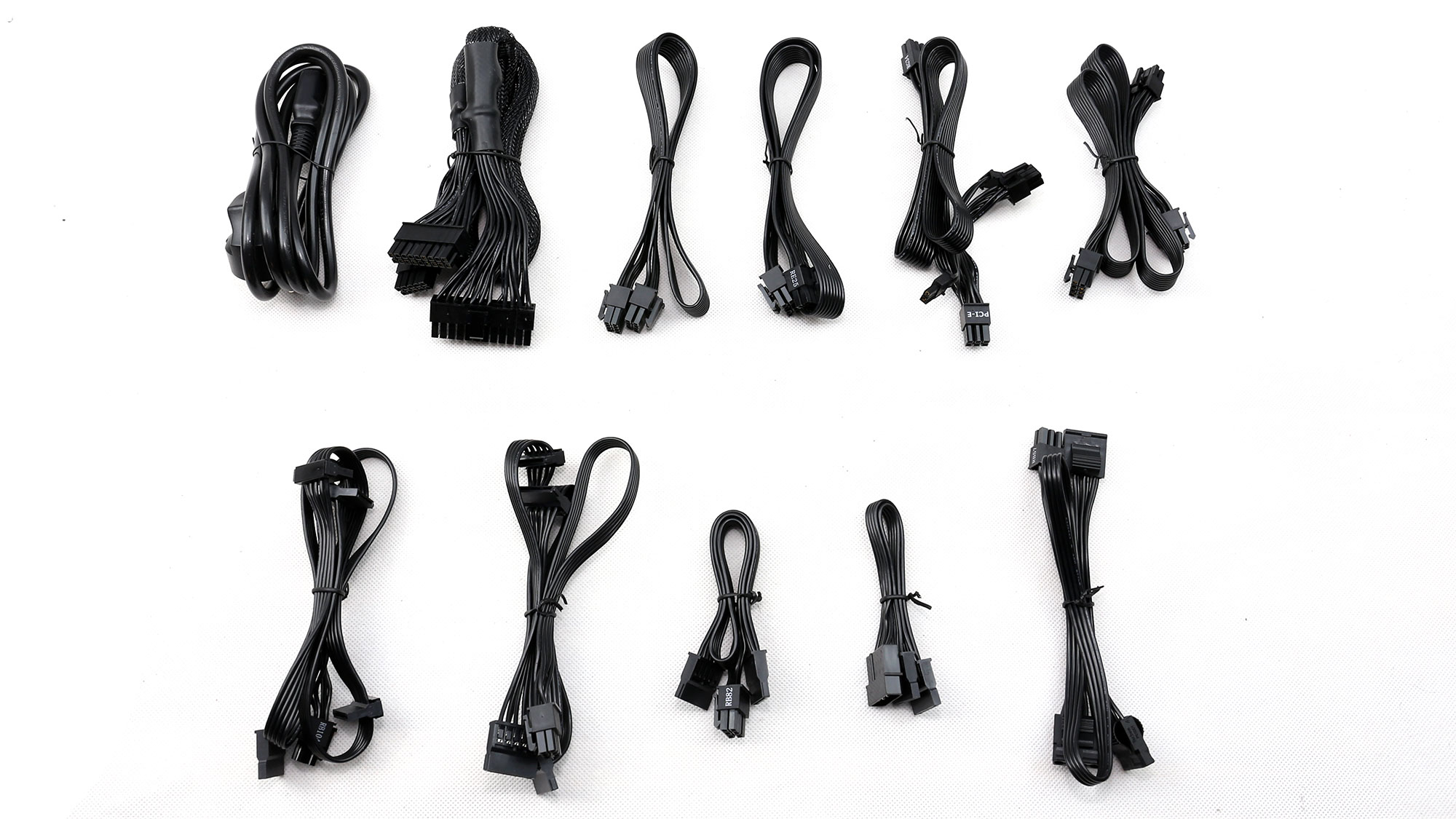
Cable Photos
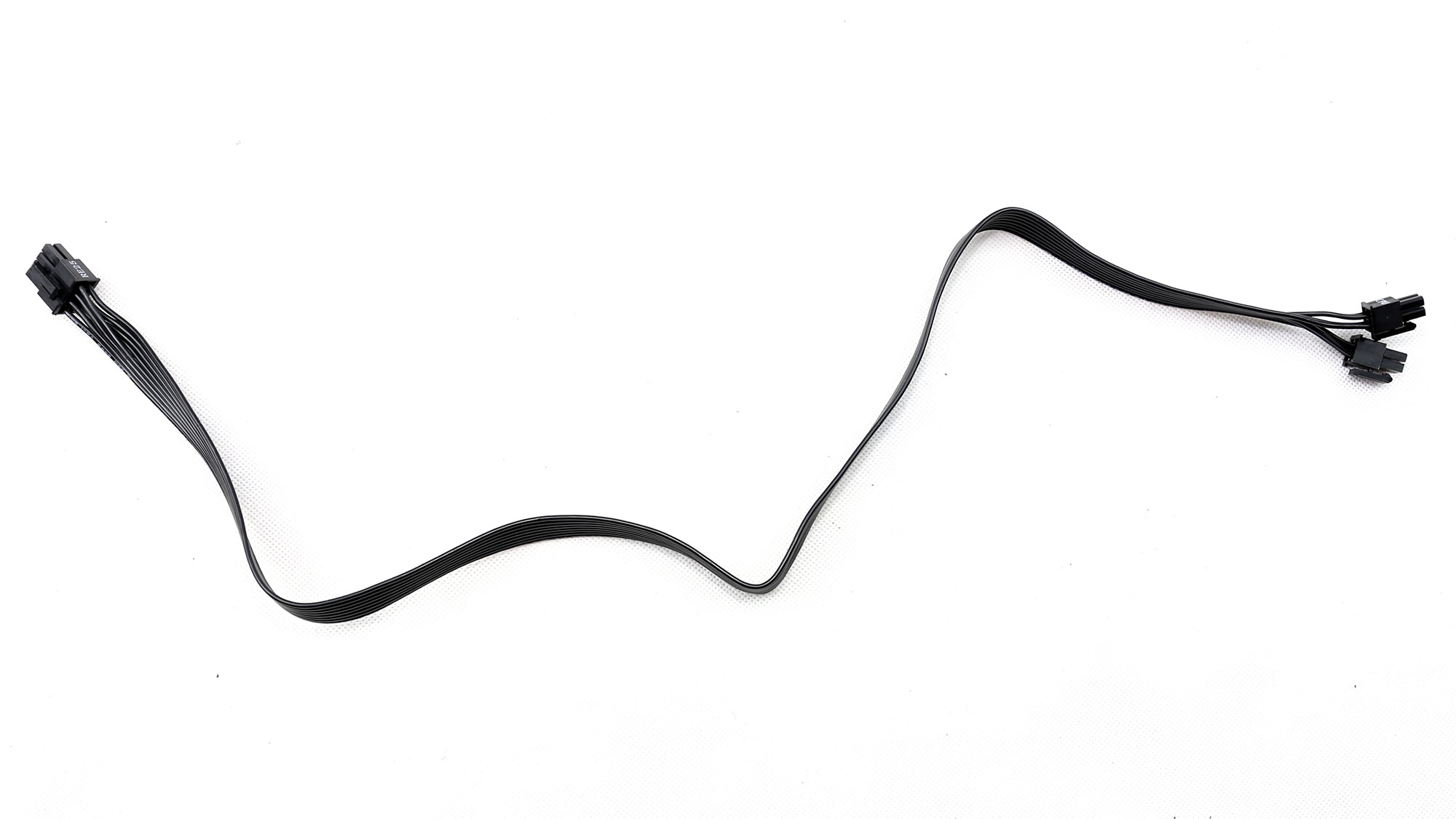
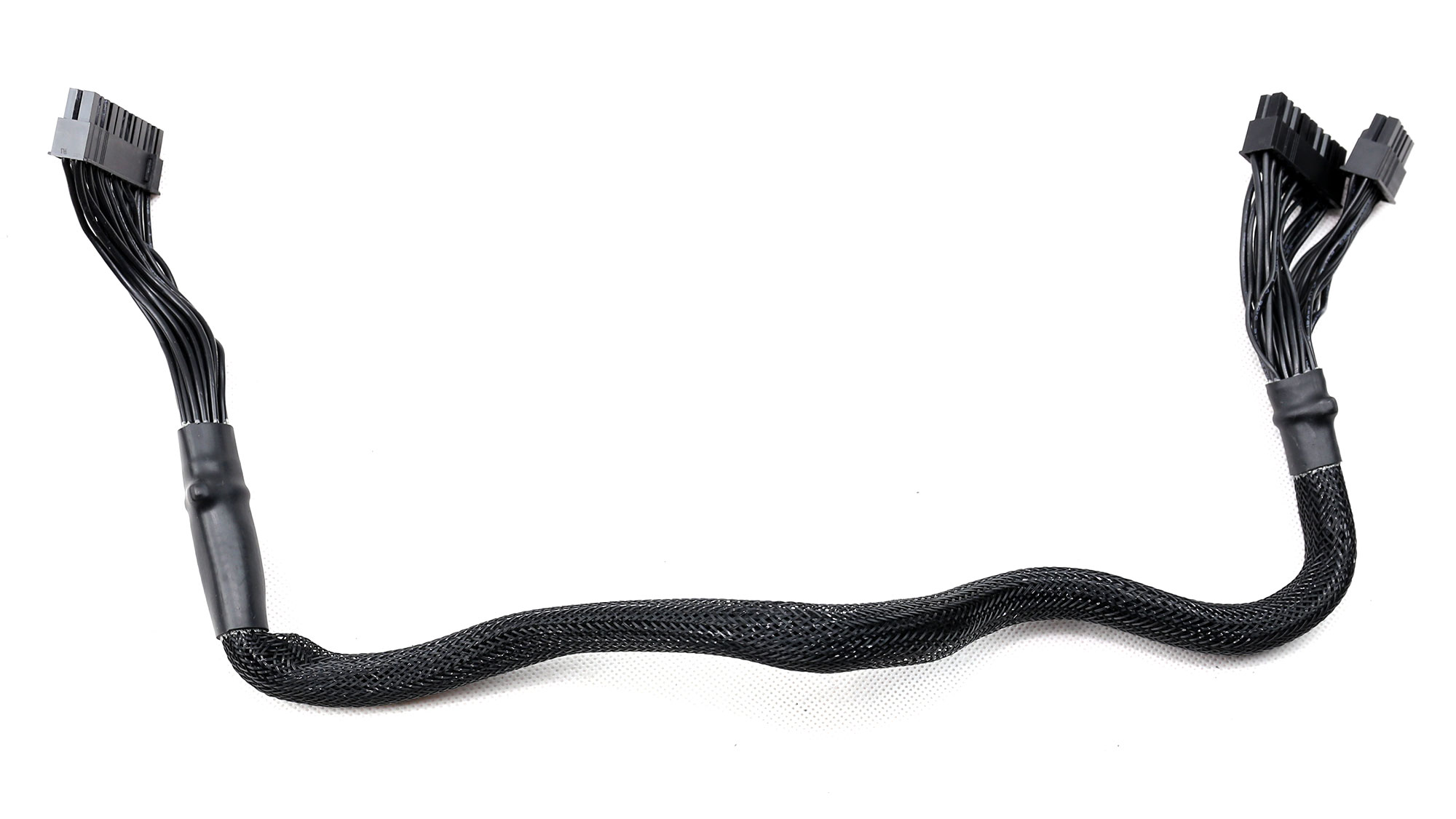
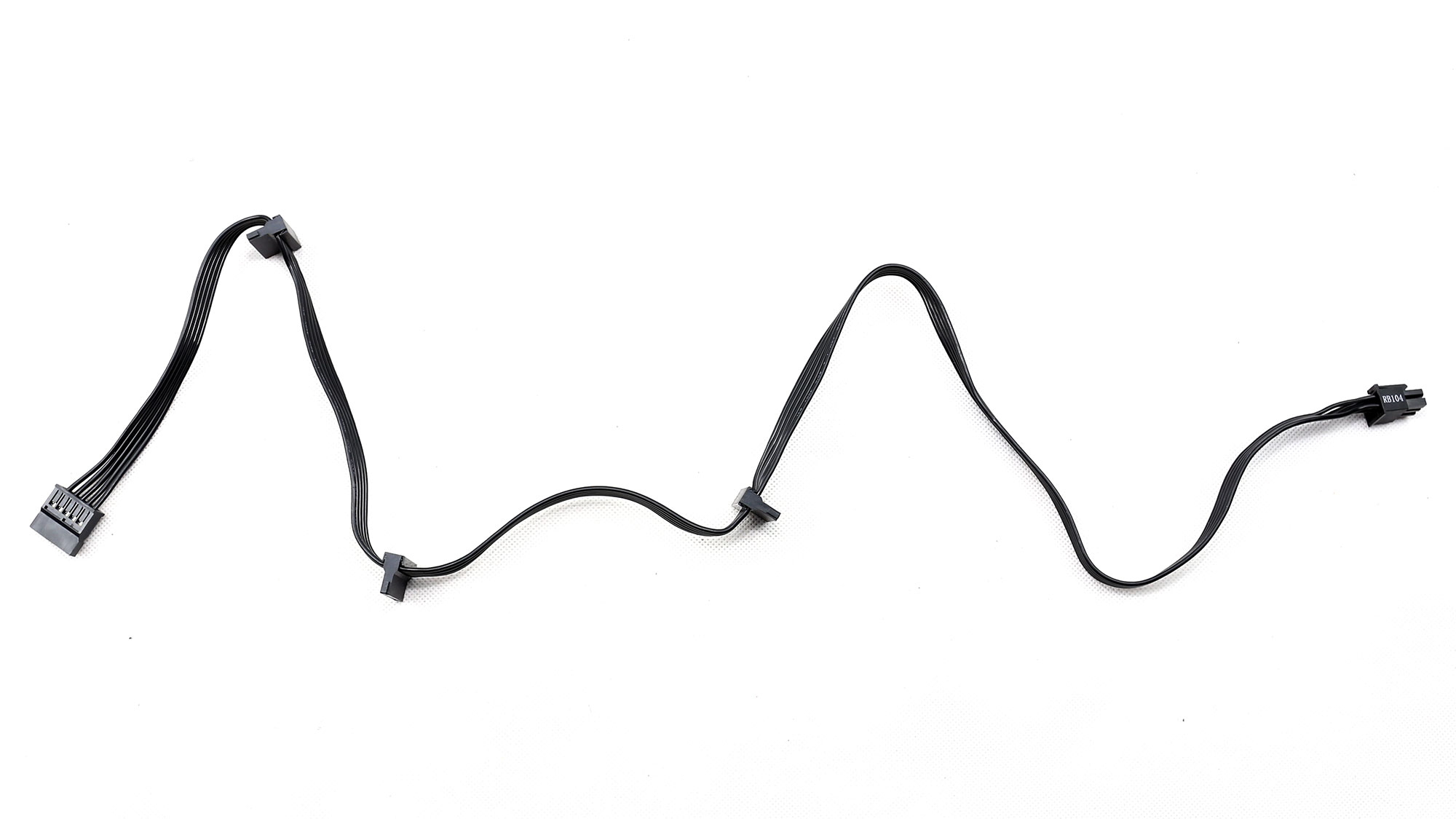

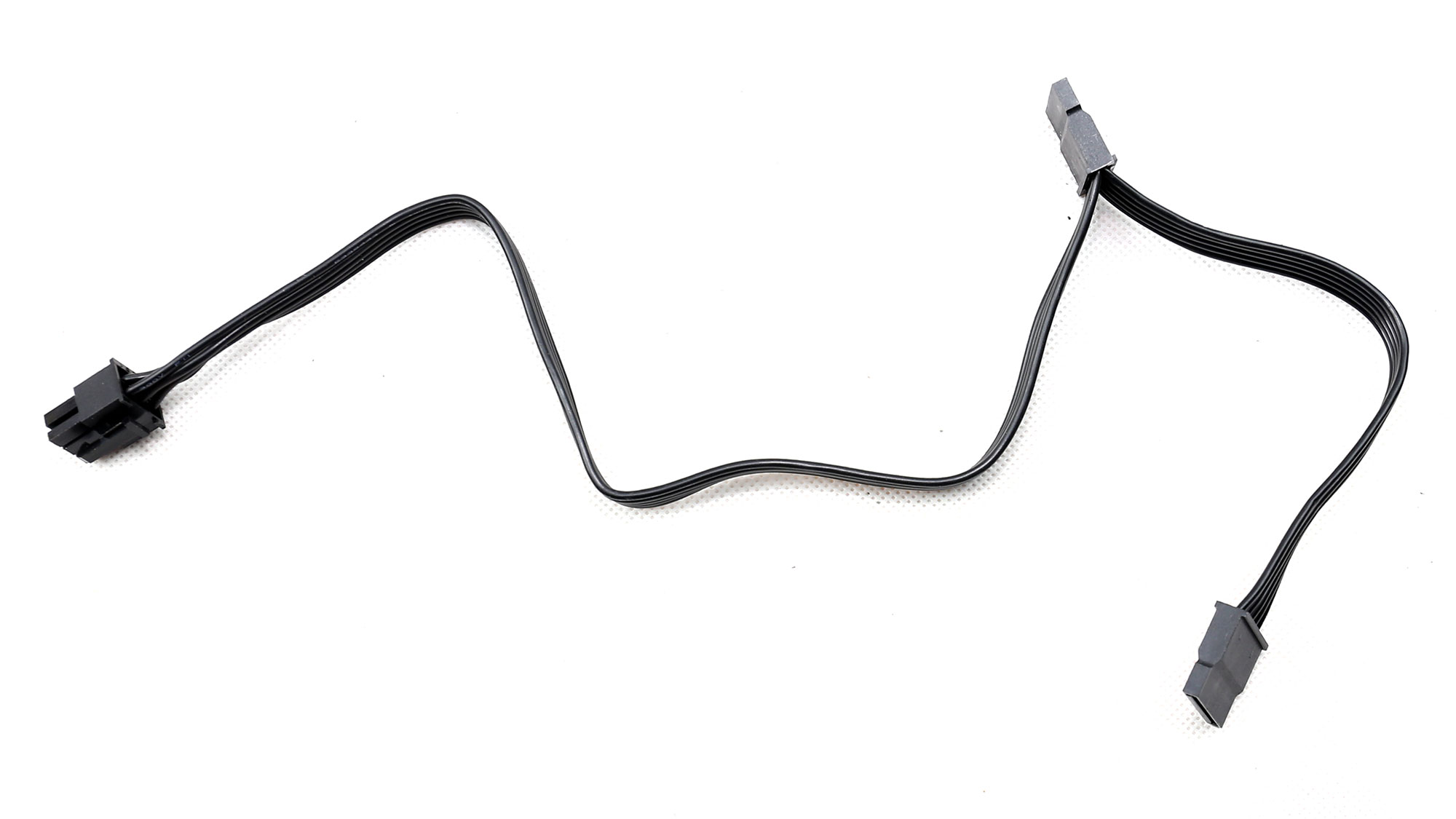

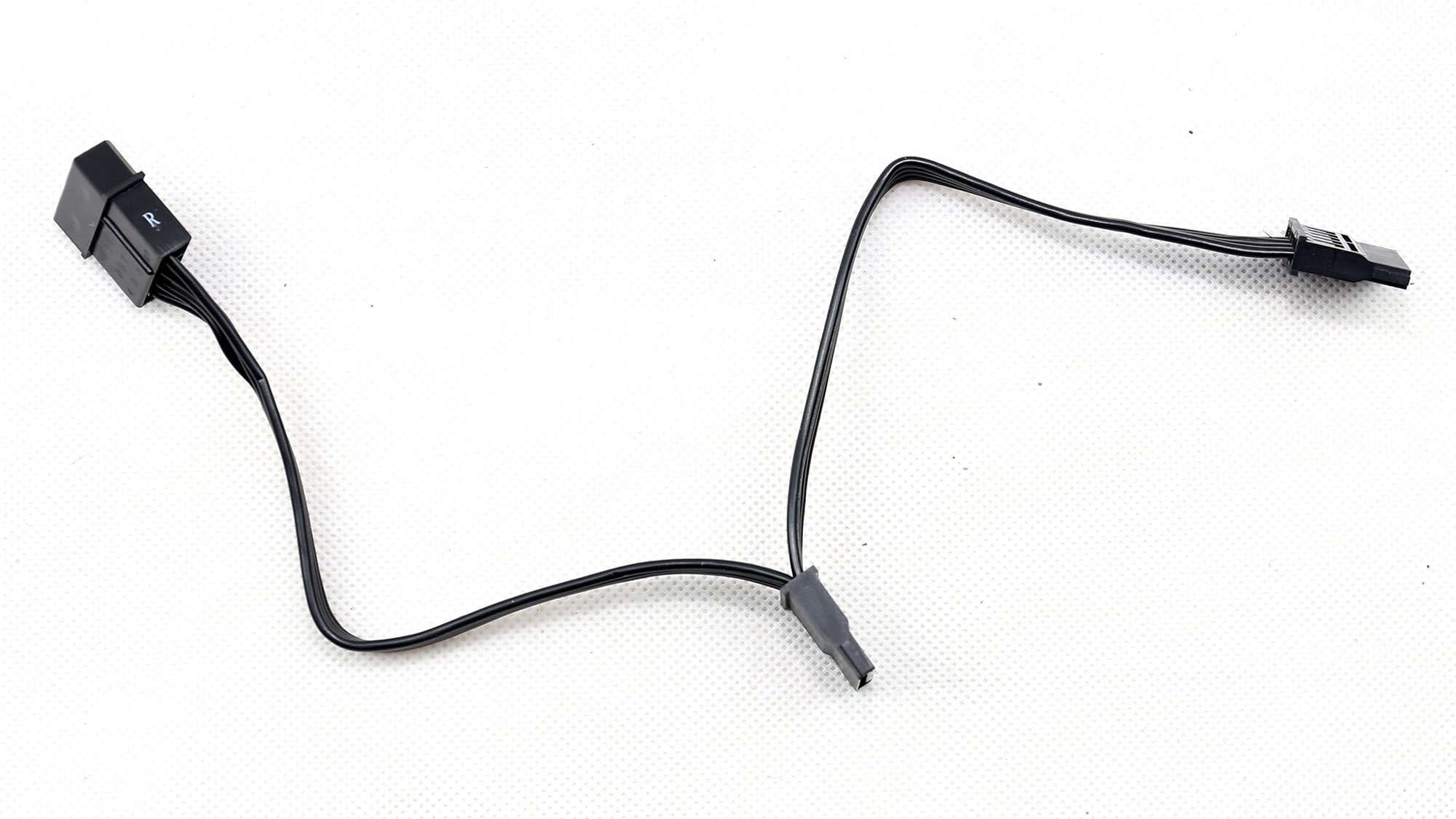
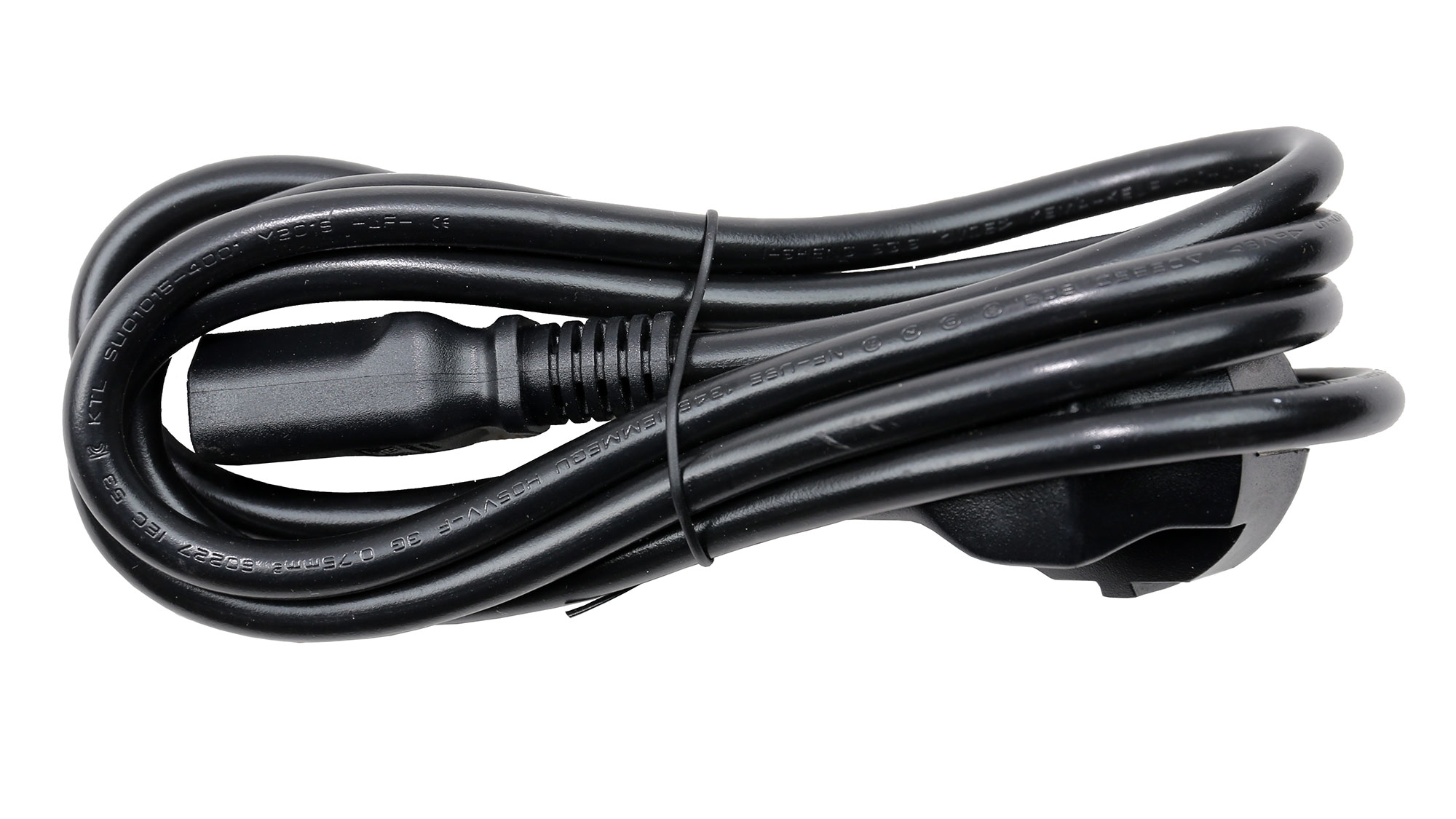
Component Analysis
We strongly encourage you to have a look at our PSUs 101 article, which provides valuable information about PSUs and their operation, allowing you to better understand the components we're about to discuss.
| General Data | - |
| Manufacturer (OEM) | Seasonic |
| PCB Type | Double Sided |
| Primary Side | - |
| Transient Filter | 4x Y caps, 2x X caps, 2x CM chokes, 1x MOV, 1x Discharge IC |
| Inrush Protection | NTC Thermistor & Relay |
| Bridge Rectifier(s) | 2x GBU1006 (600V, 10A @ 100°C) |
| APFC MOSFETS | 2x Champion GPT18N50D (500V, 18A, 0.27Ohm) |
| APFC Boost Diode | 1x NXP BYC8-600 (600V, 8A @ 109°C) |
| Hold-up Cap(s) | 1x Hitachi (400V, 470uF, 2,000h @ 105°C, HU) |
| Main Switchers | 4x Champion GPT10N50AD (500V, 9.7A, 0.7Ohm) |
|
APFC Controller |
Champion CM6500UNX |
| Resonant Controllers | Champion CM6901T6 |
| Topology | Primary side: Full-Bridge & LLC converter Secondary side: Synchronous Rectification & DC-DC converters |
| Secondary Side | - |
| +12V MOSFETS | 2x Nexperia PSMN1R8-40YLC (40V, 100A @ 100°C, 3.25mOhm @ 150°C) |
| 5V & 3.3V | DC-DC Converters |
| Filtering Capacitors |
Electrolytics: 6x Nippon Chemi-Con (4-10,000h @ 105°C, KY), 3x Nippon Chemi-Con (1-5,000h @ 105°C, KZE), 2x Nichicon (2-5,000h @ 105°C, HD), 3x Nichicon (4-10,000h @ 105°C, HE) |
| Supervisor IC | Weltrend WT7527V (OCP, OVP, UVP, SCP, PG) |
| Fan Model | Hong Hua HA1225H12F-Z (120mm, 12V, 0.58A, Fluid Dynamic Bearing Fan) |
| 5VSB Circuit | - |
| Rectifier | 1xPFC P10V45SP SBR (45V, 10A) |
| Standby PWM Controller | Excelliance MOS EM8569 |
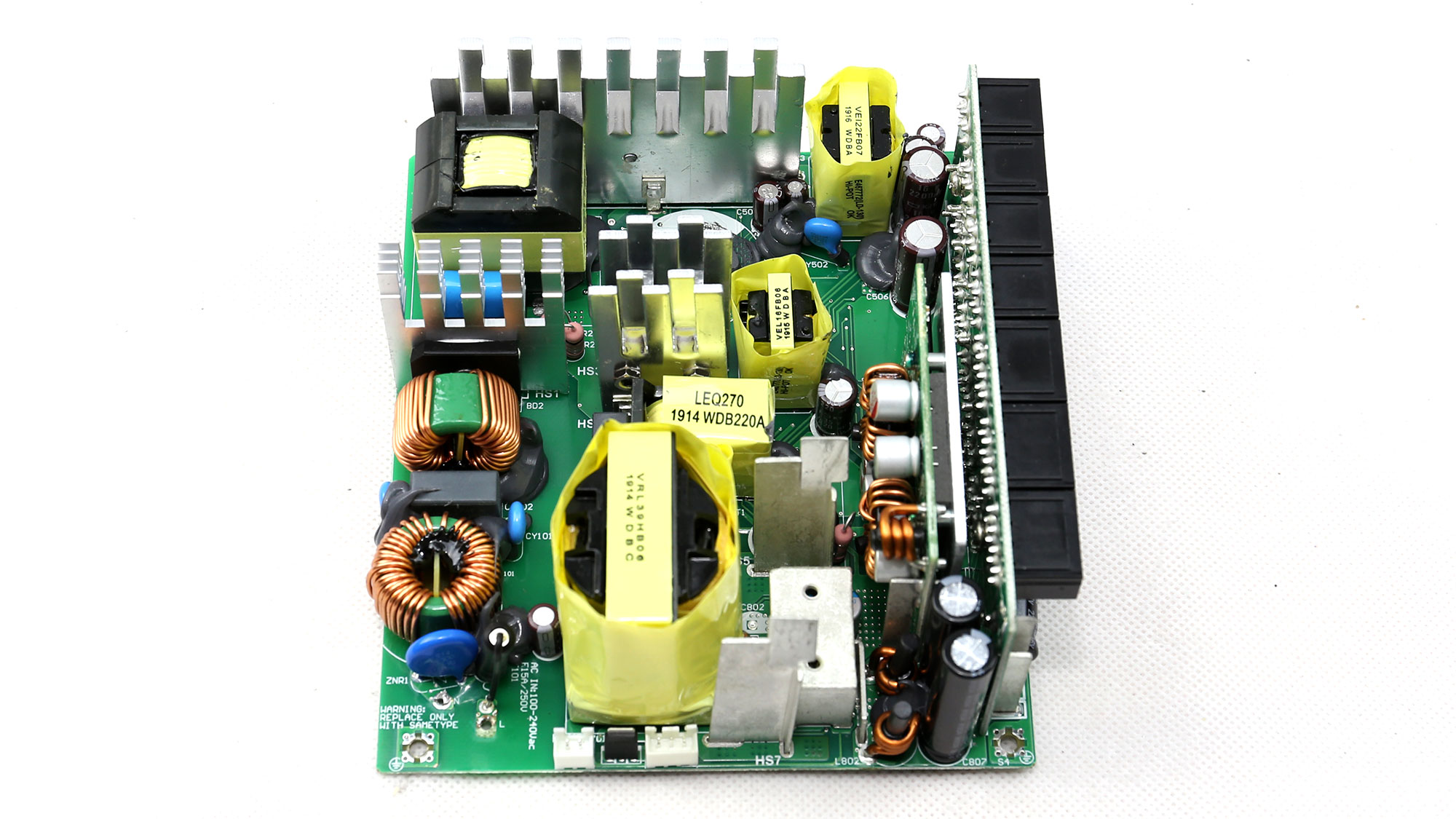
Overall Photos

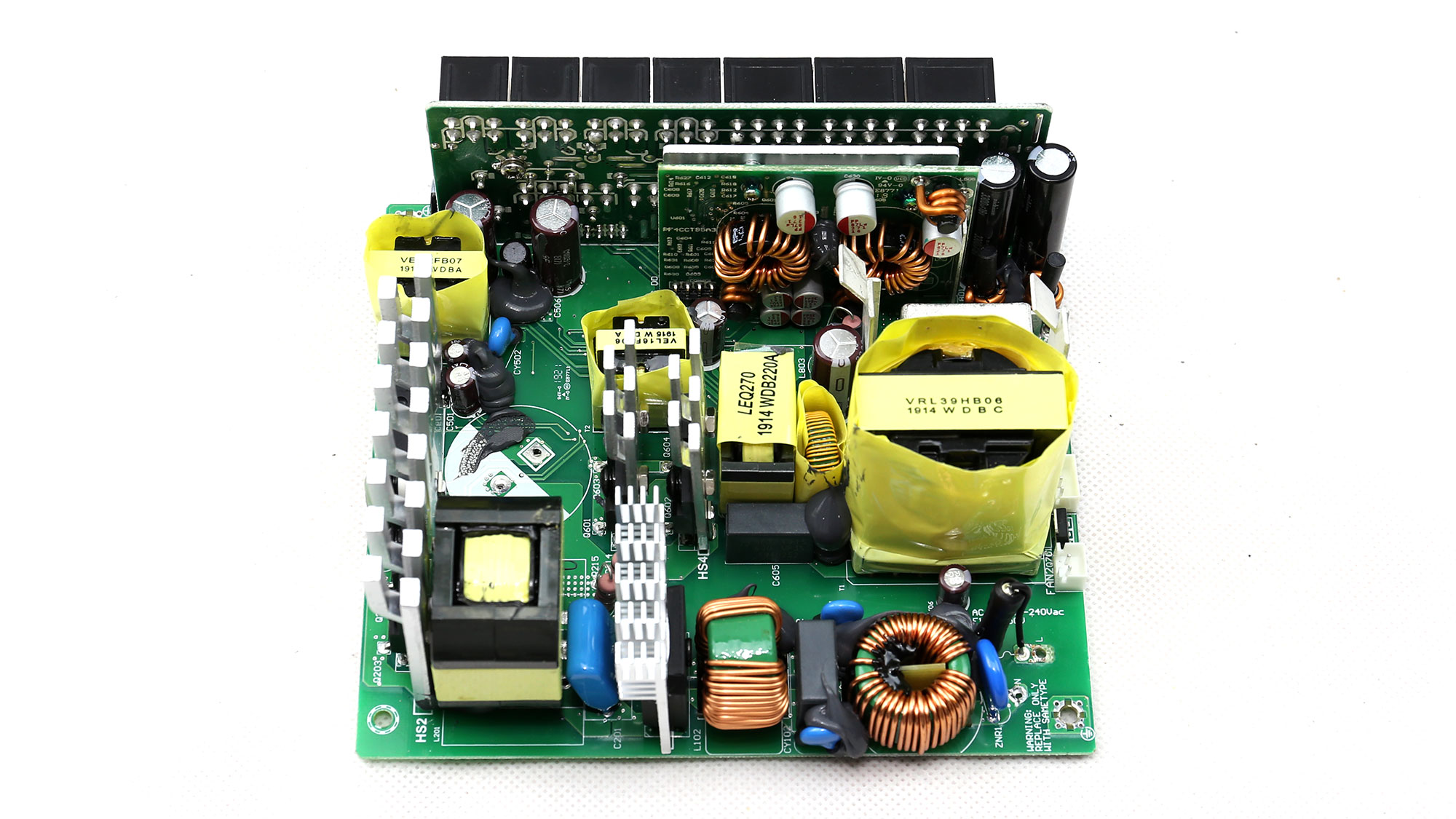
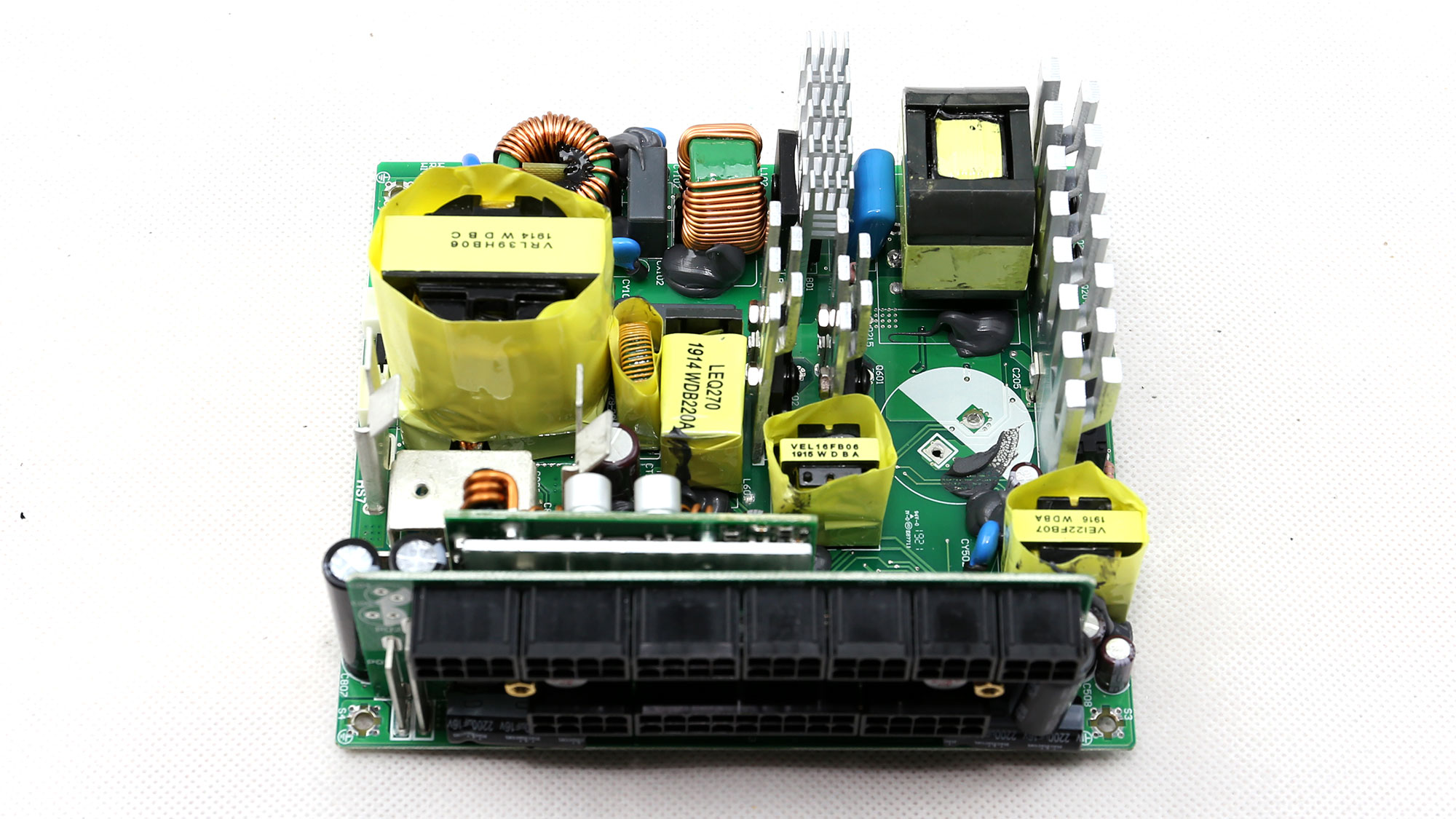
As we already mentioned, all AMP models are based on Seasonic's newest Focus Plus platform. The main PCB is compact but still has enough clearance between parts, to allow for proper airflow. The build quality is excellent, and all parts are carefully selected to offer the highest possible lifetime, without dramatically increasing the manufacturing cost.
Get Tom's Hardware's best news and in-depth reviews, straight to your inbox.
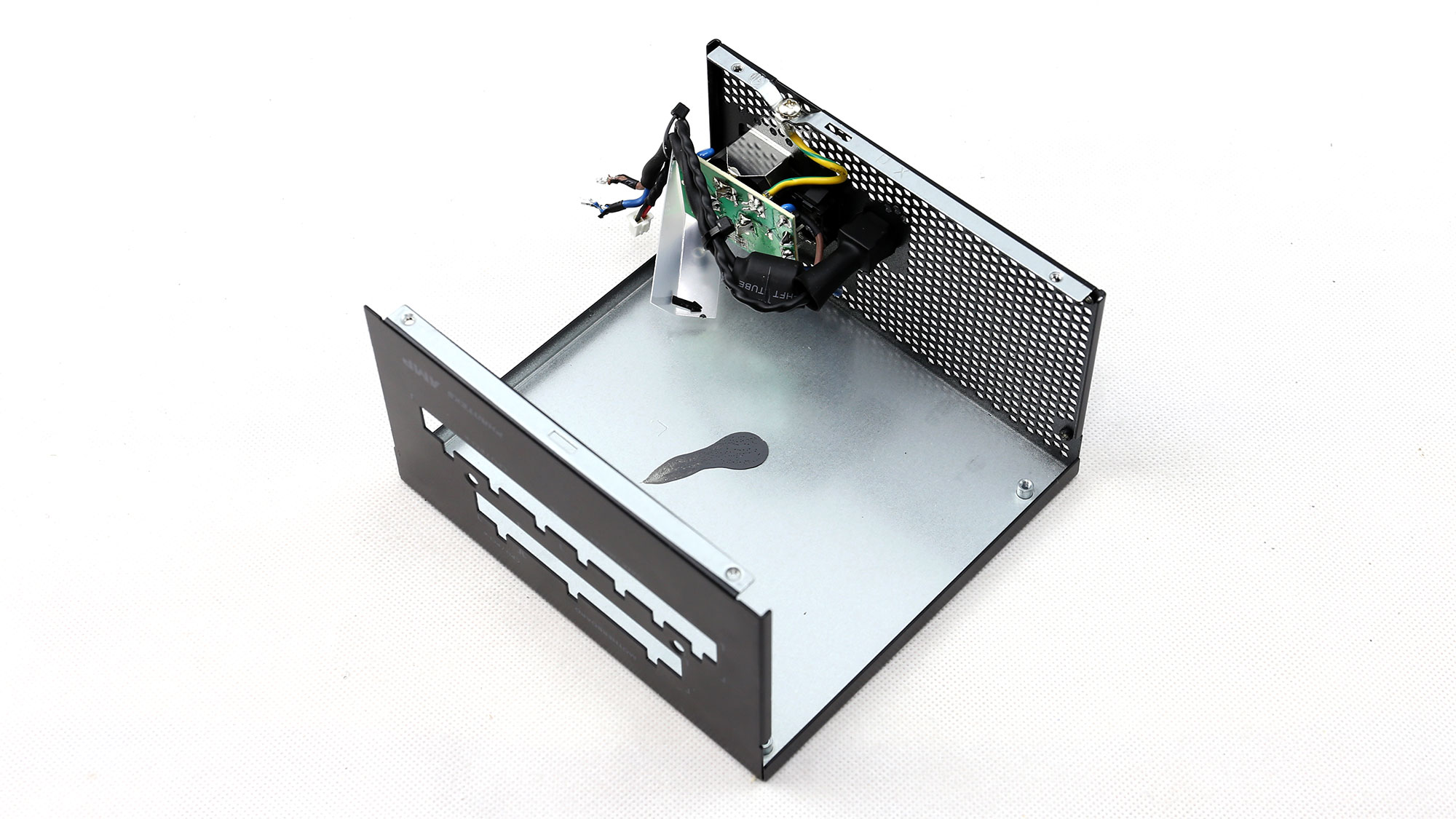
Transient filter
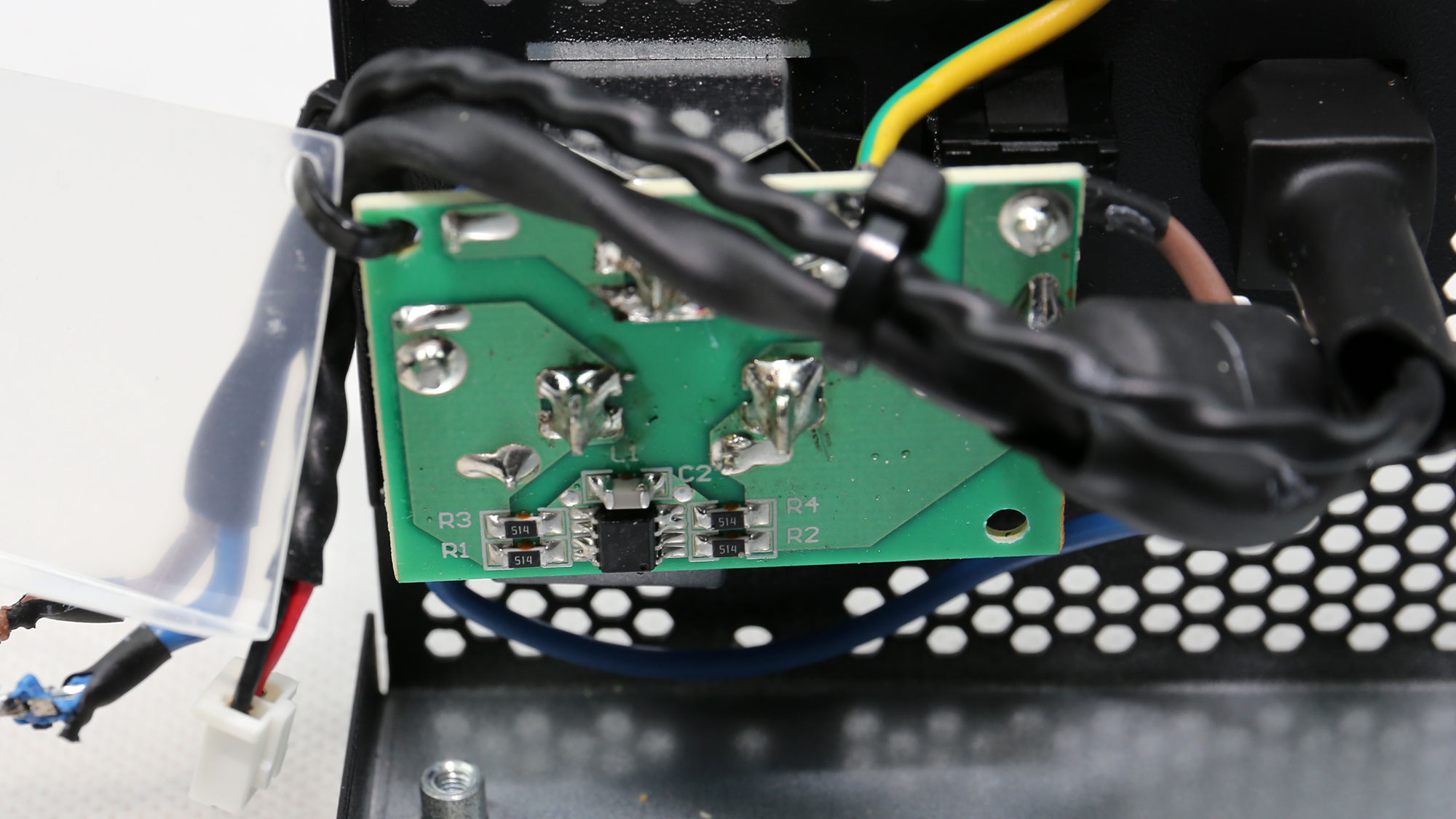

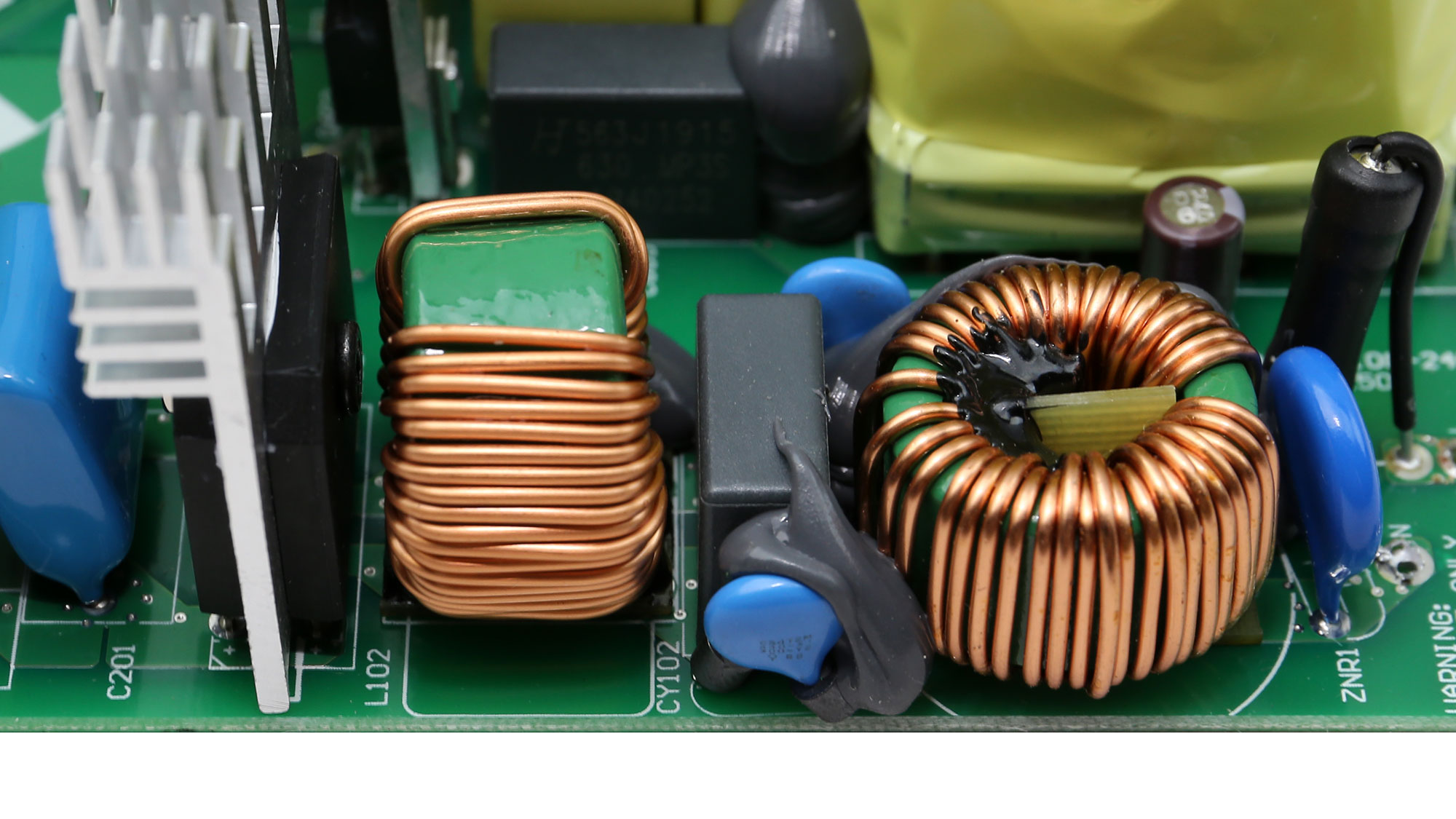


The transient filter is complete since it includes all necessary parts, along with a discharge IC for lower power losses on X caps.
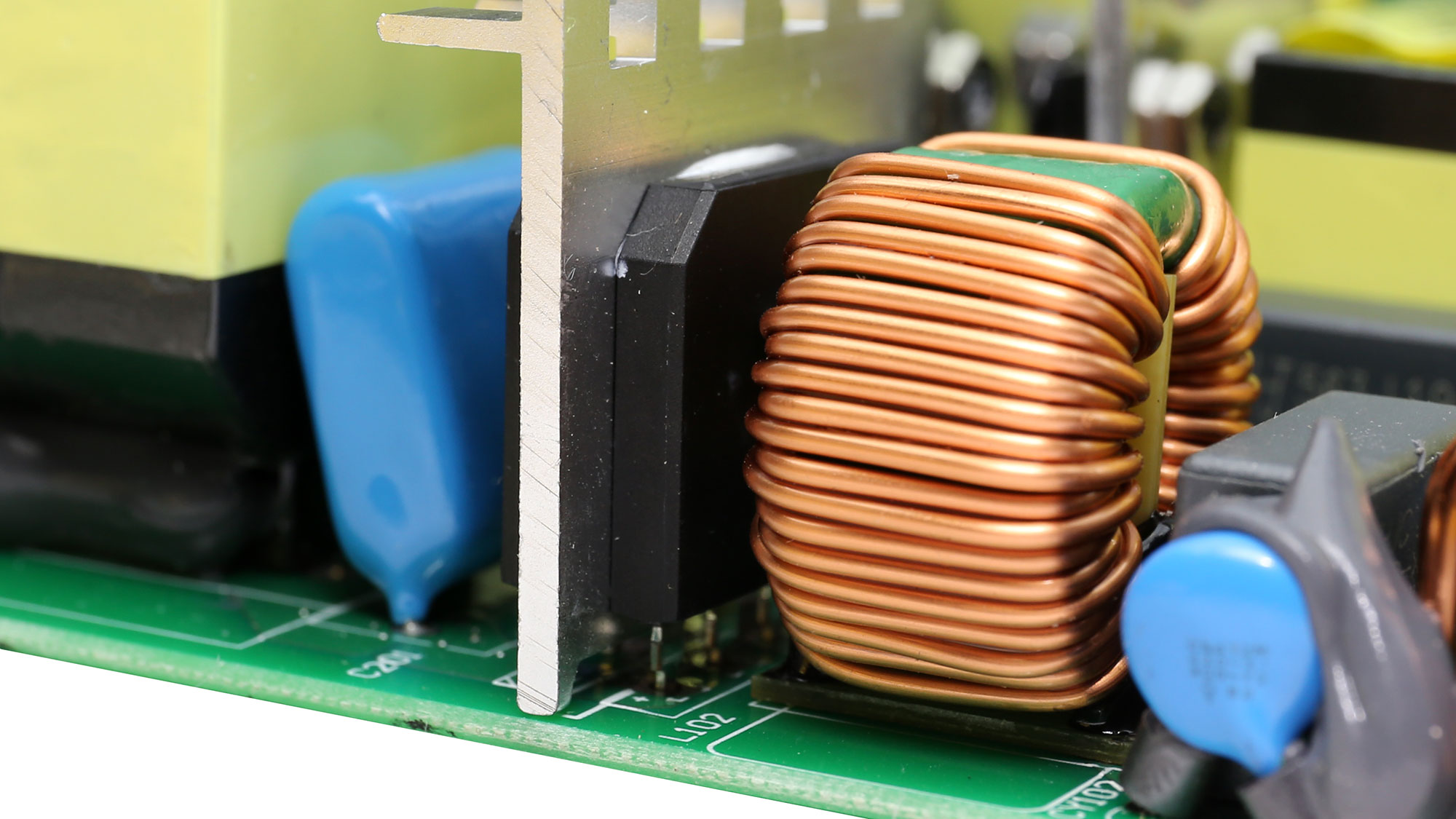
Bridge rectifiers

Both bridge rectifiers are cooled down by a small heat sink.
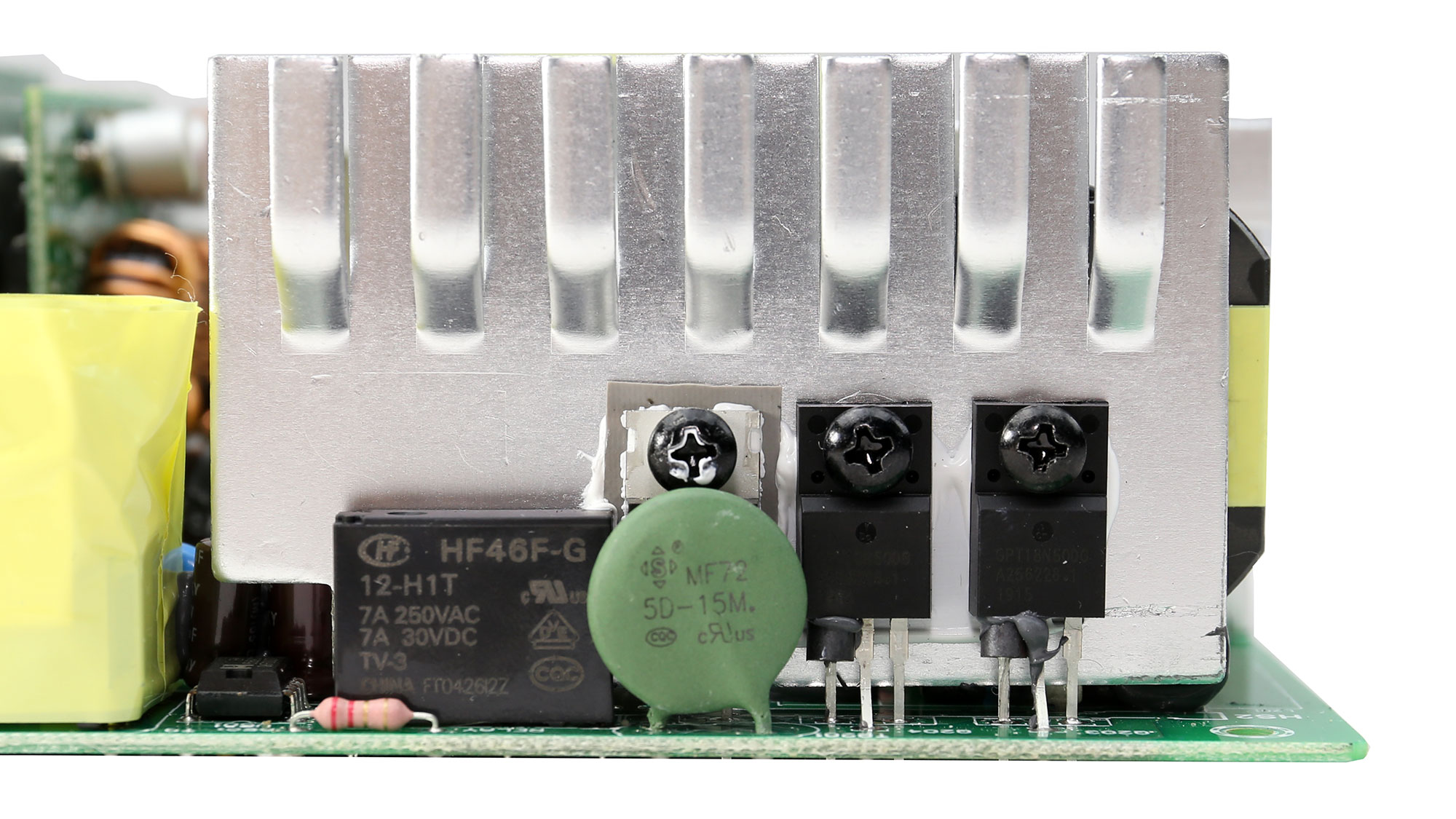
APFC converter
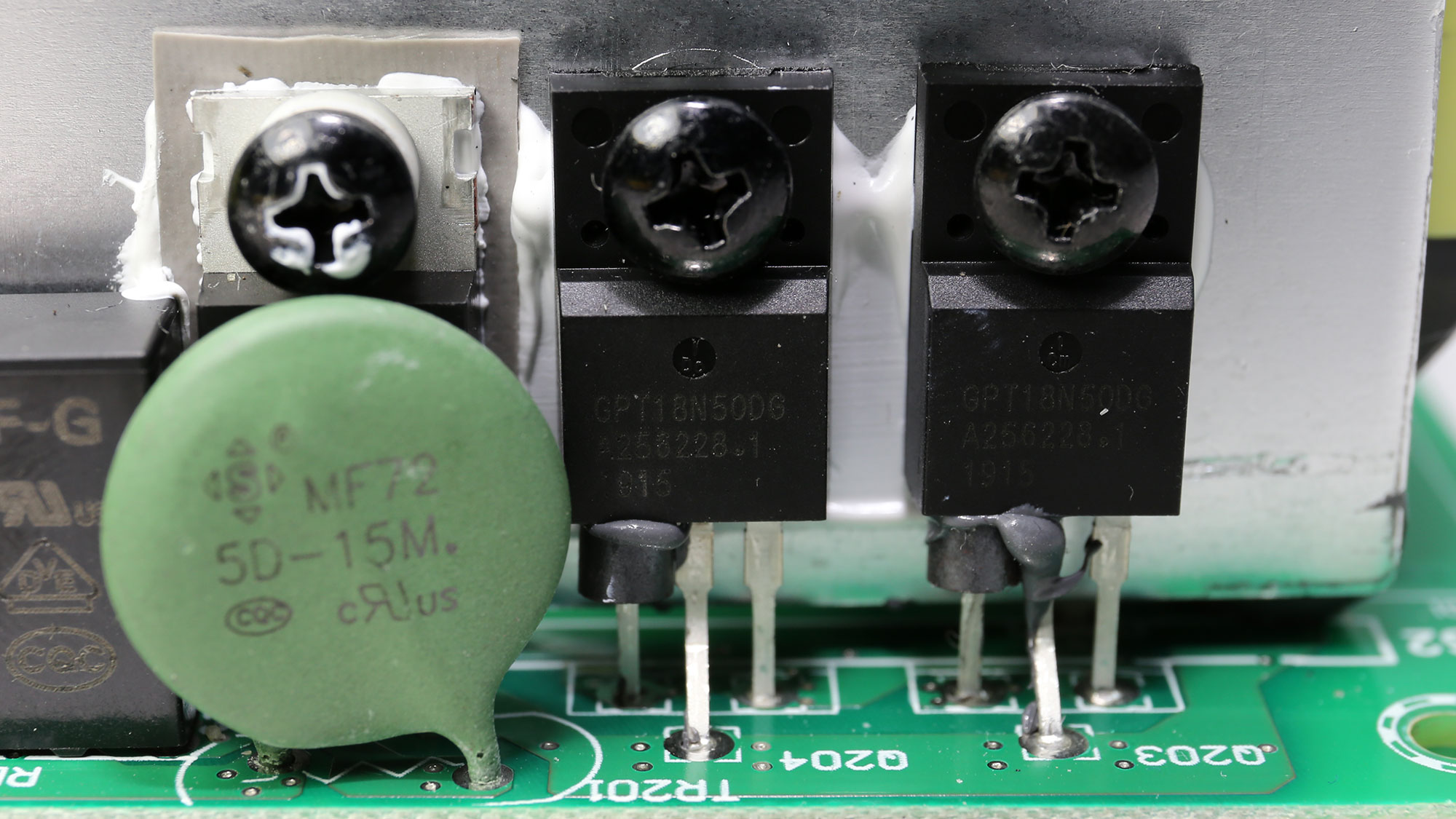

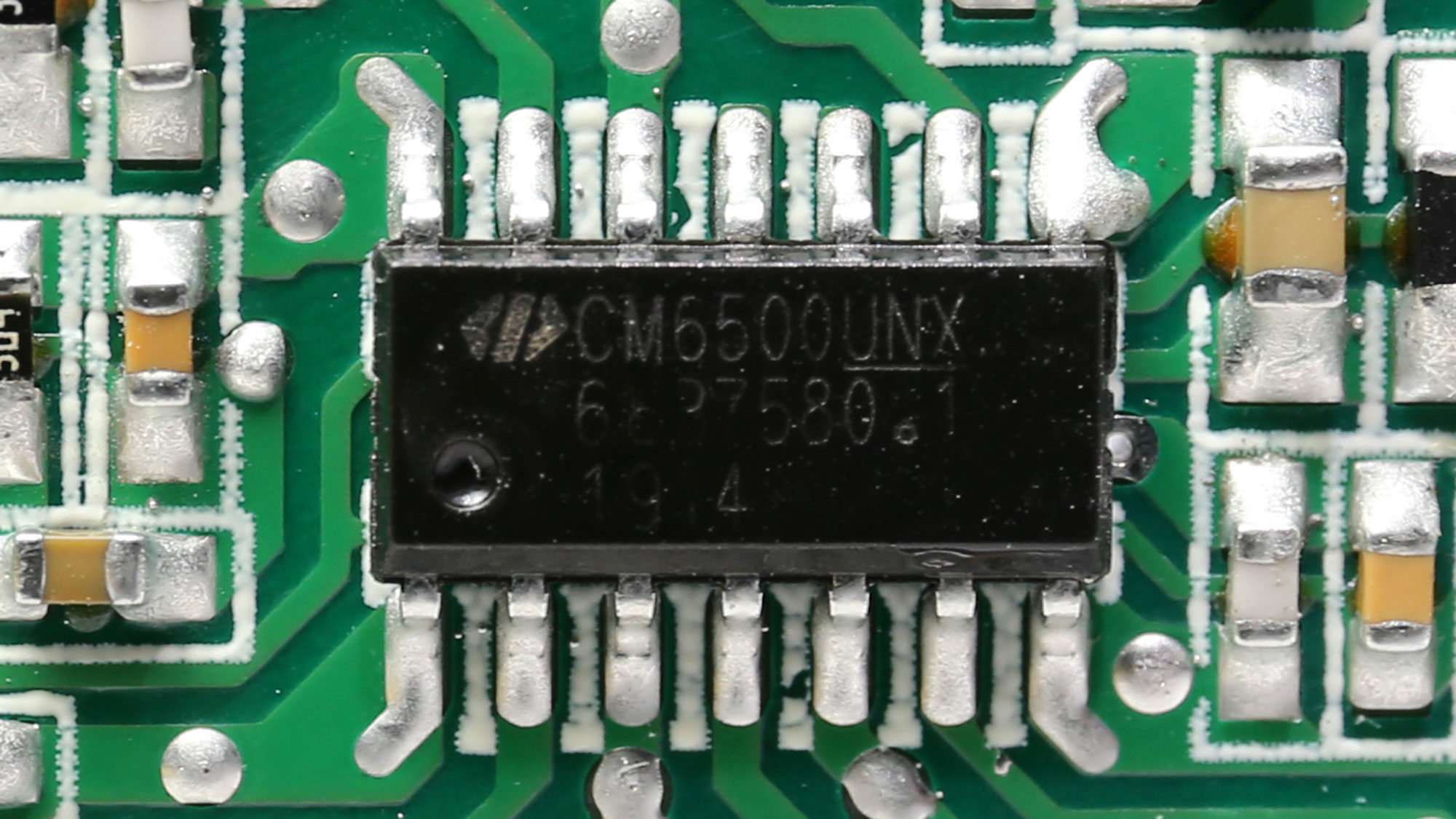
Right in front of the APFC converter's parts, we find the NTC thermistor with model number WMF21-5D-15M and its bypass relay. This specific thermistor has 5 Ohms resistance (+-20%) at 25 degrees Celsius, meaning that with this specific operating temperature, the inrush current at 230V can go up to 64.86 Amps (230V x 1.41 x 5 Ohm). Given the high 20% resistance tolerance, the inrush current with 230V can be as high as 81.075A, given that the thermistor's temperature doesn't go higher than 25 degrees Celsius.
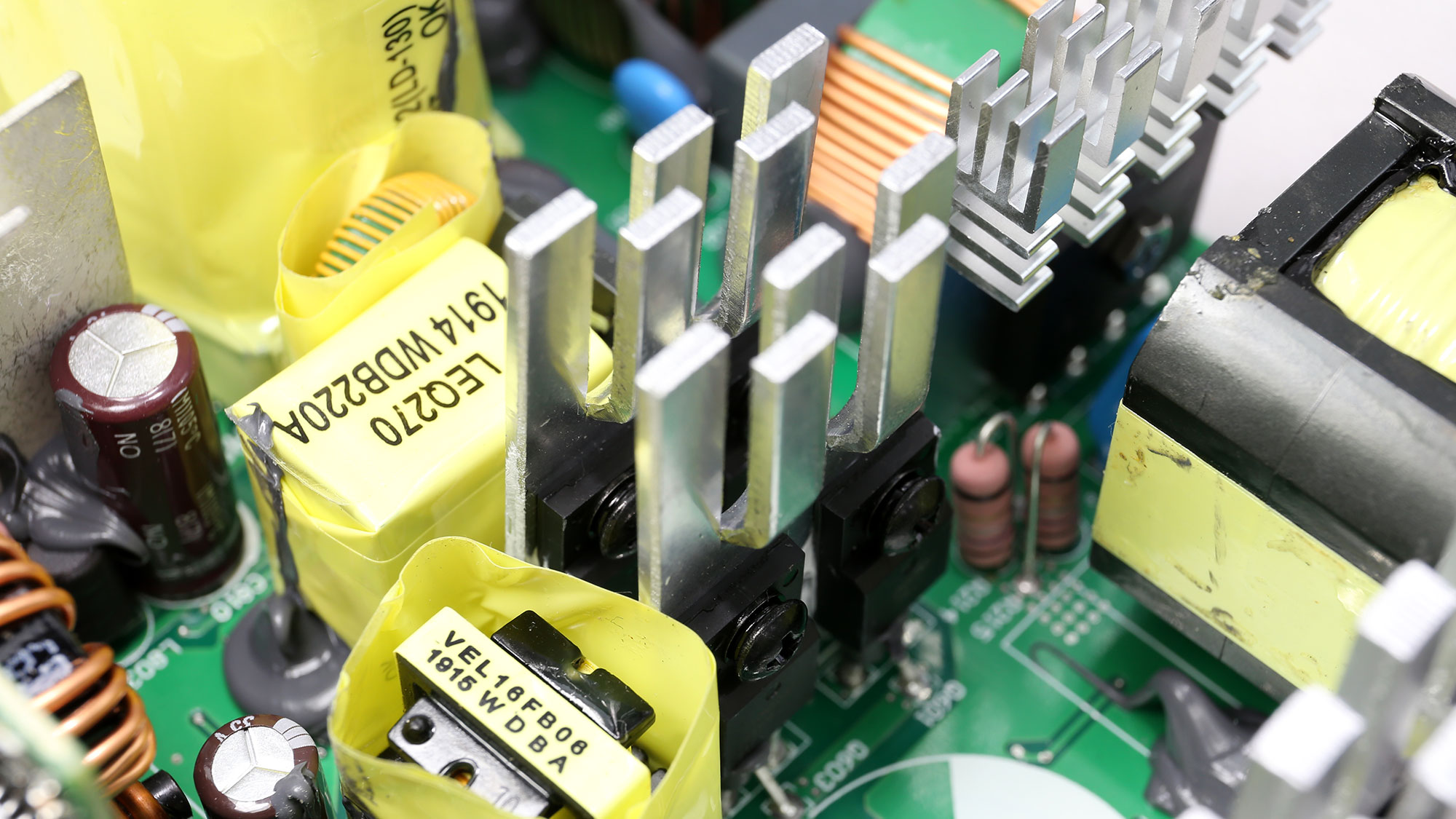
Main FETs and primary transformer

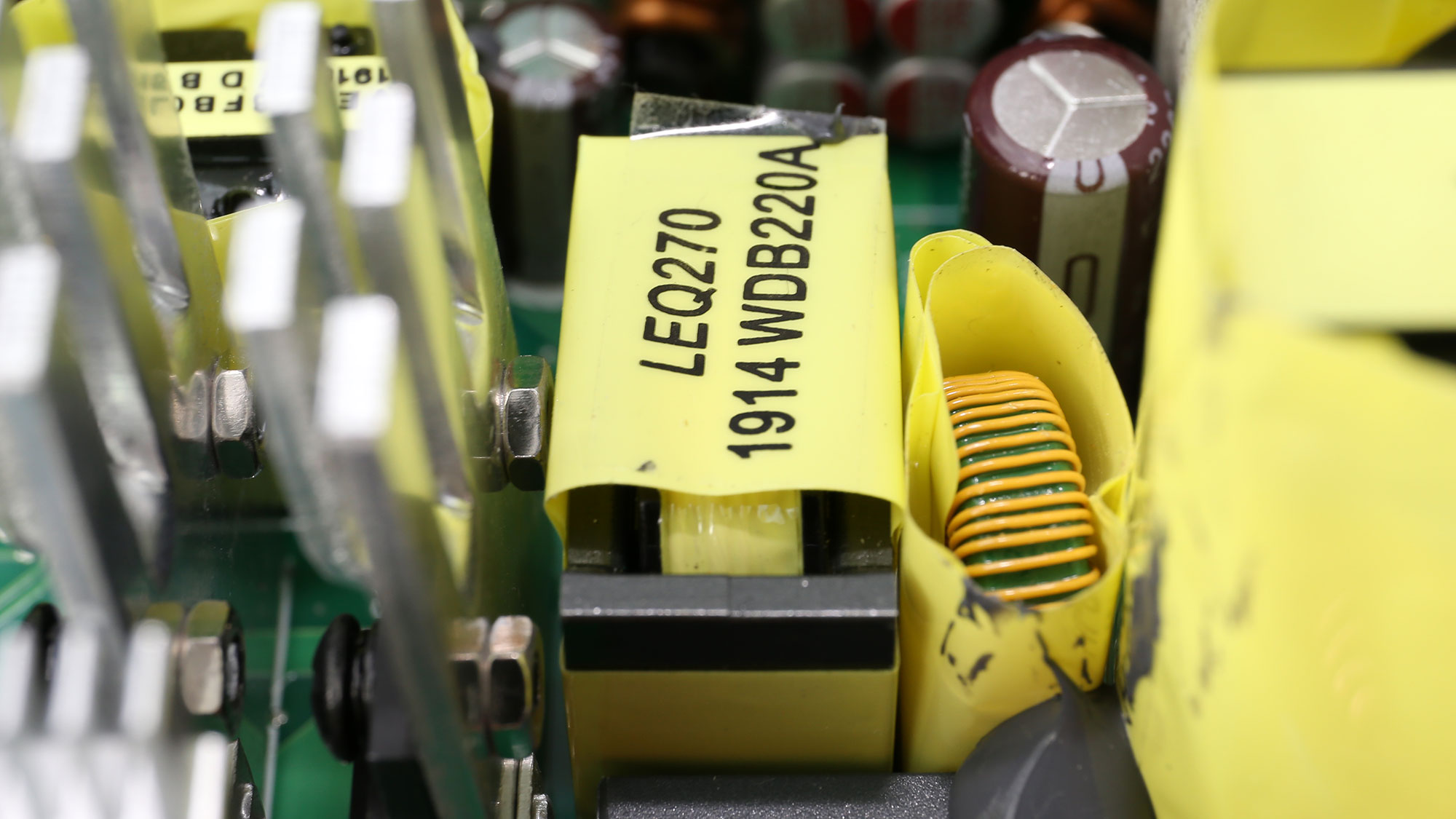
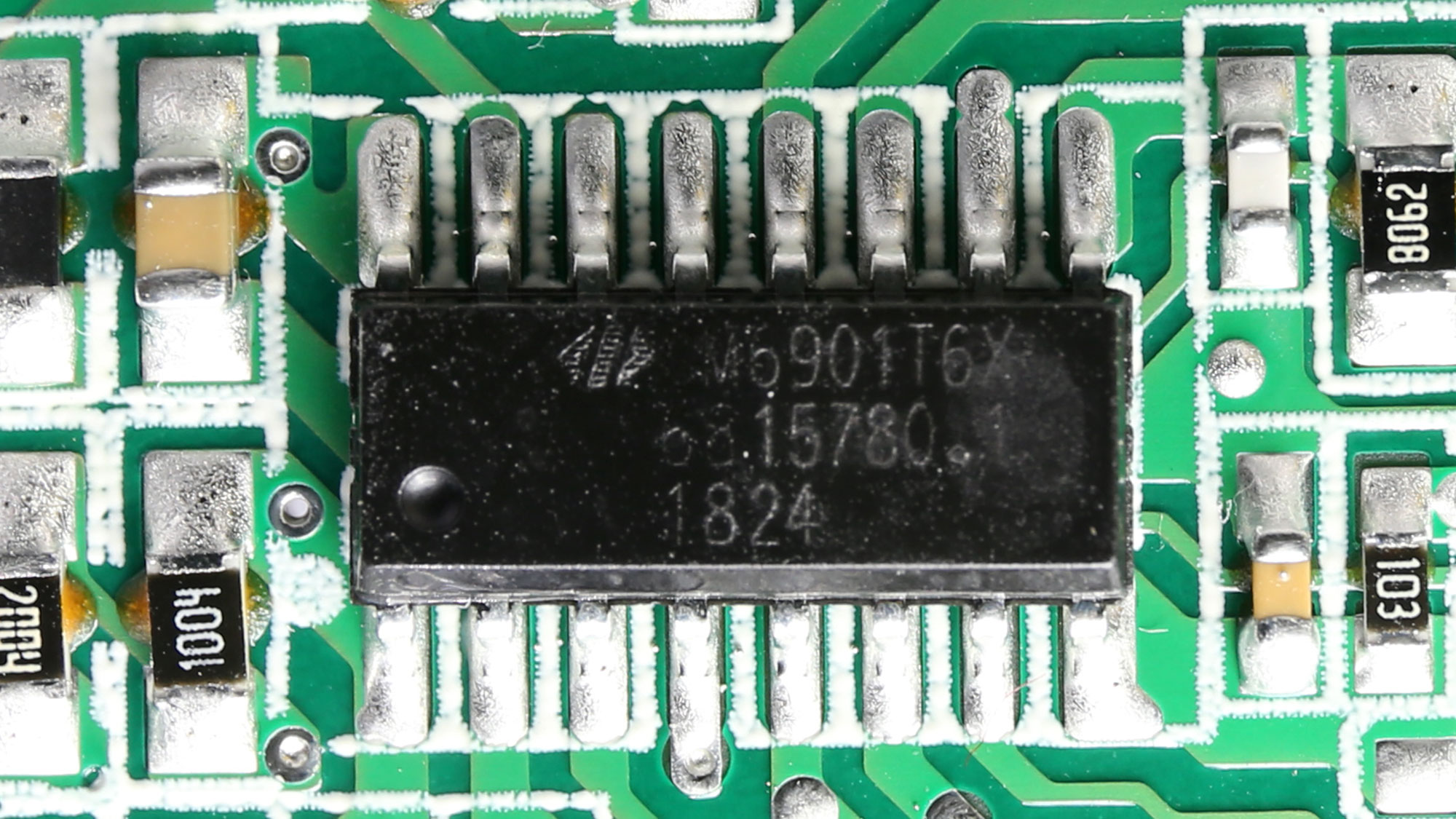
The four primary FETs are arranged in a full-bridge topology. A resonant converter is also used, to restrict energy losses.
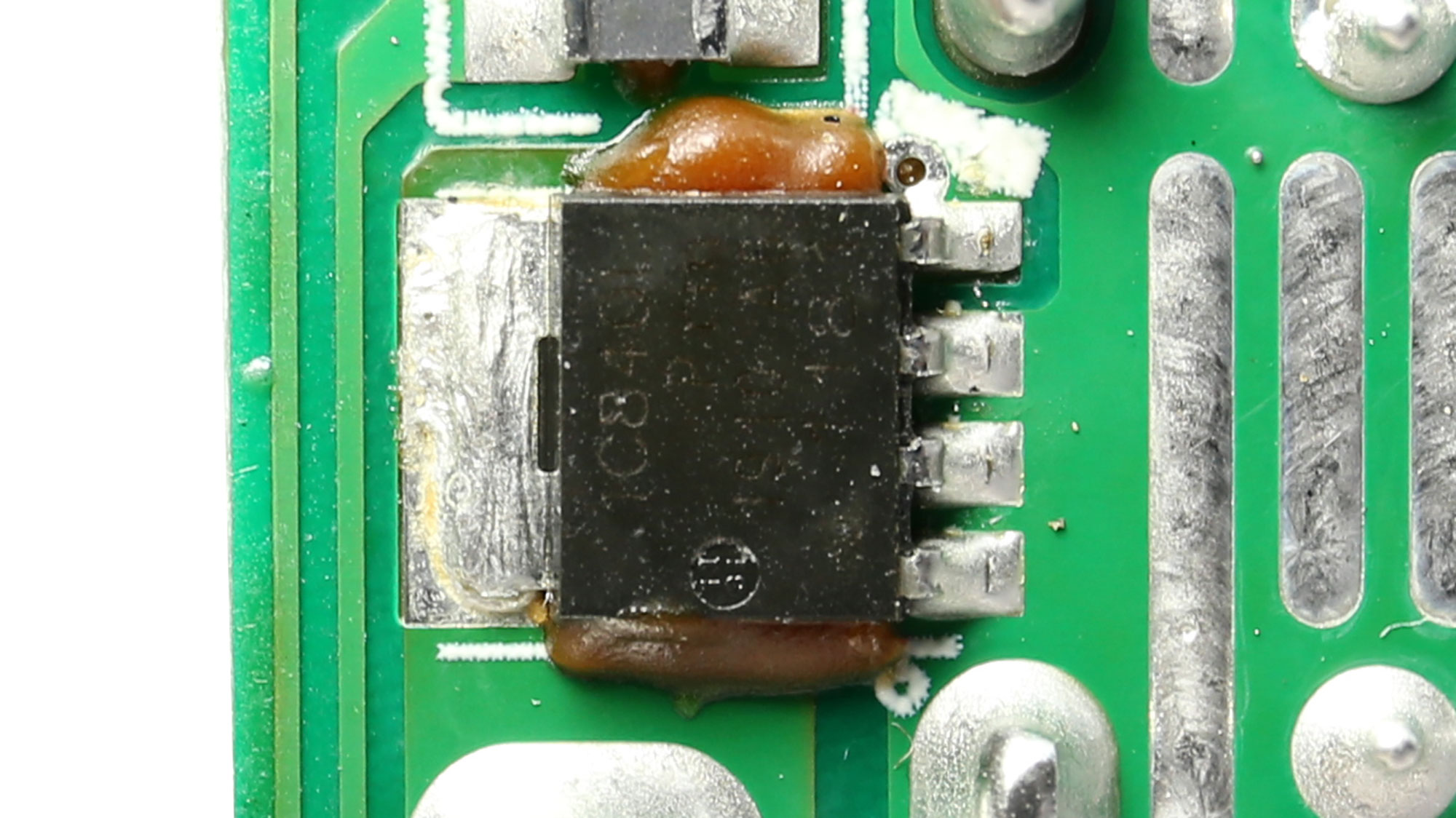
12V FETs and VRMs

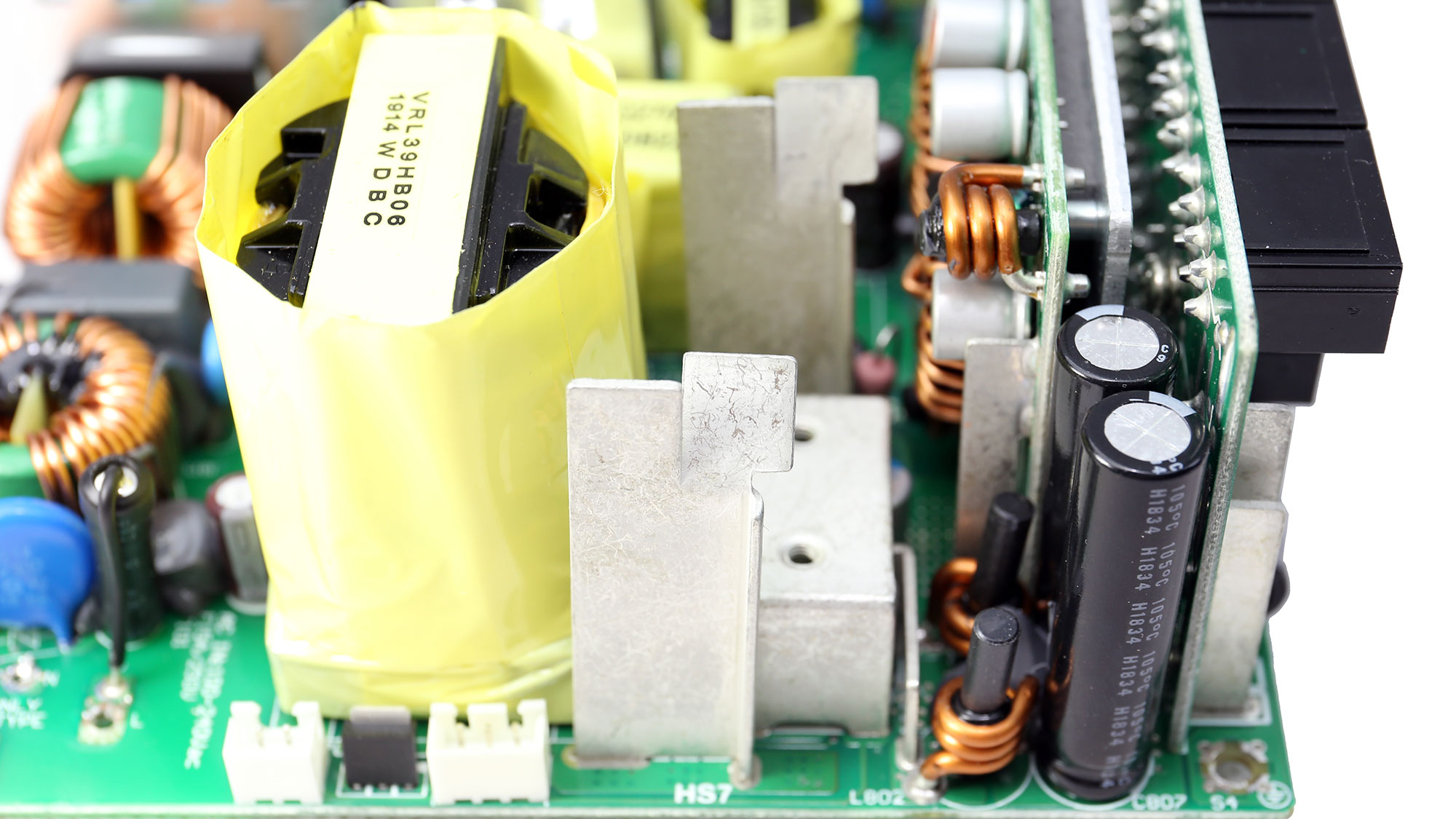
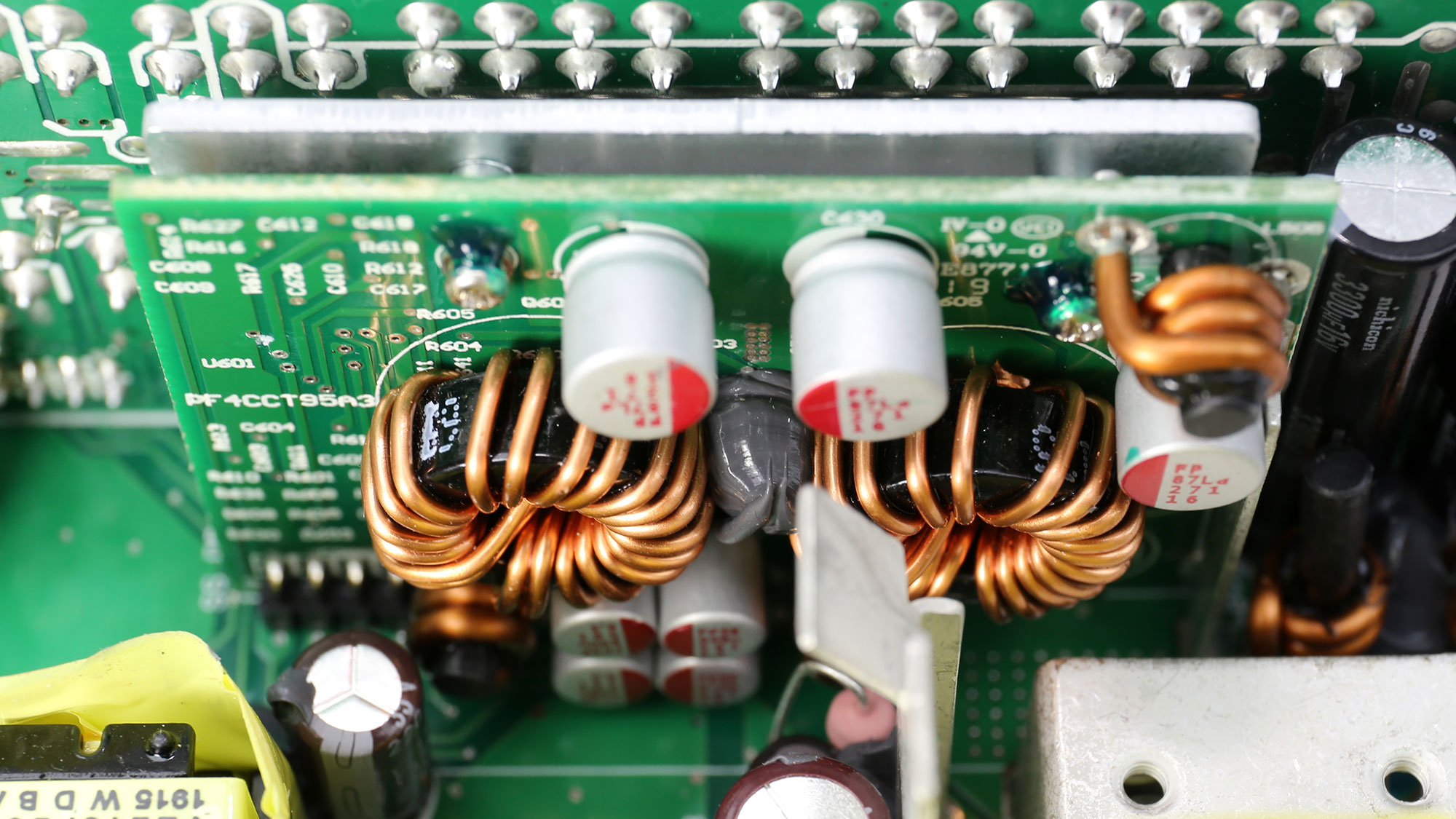
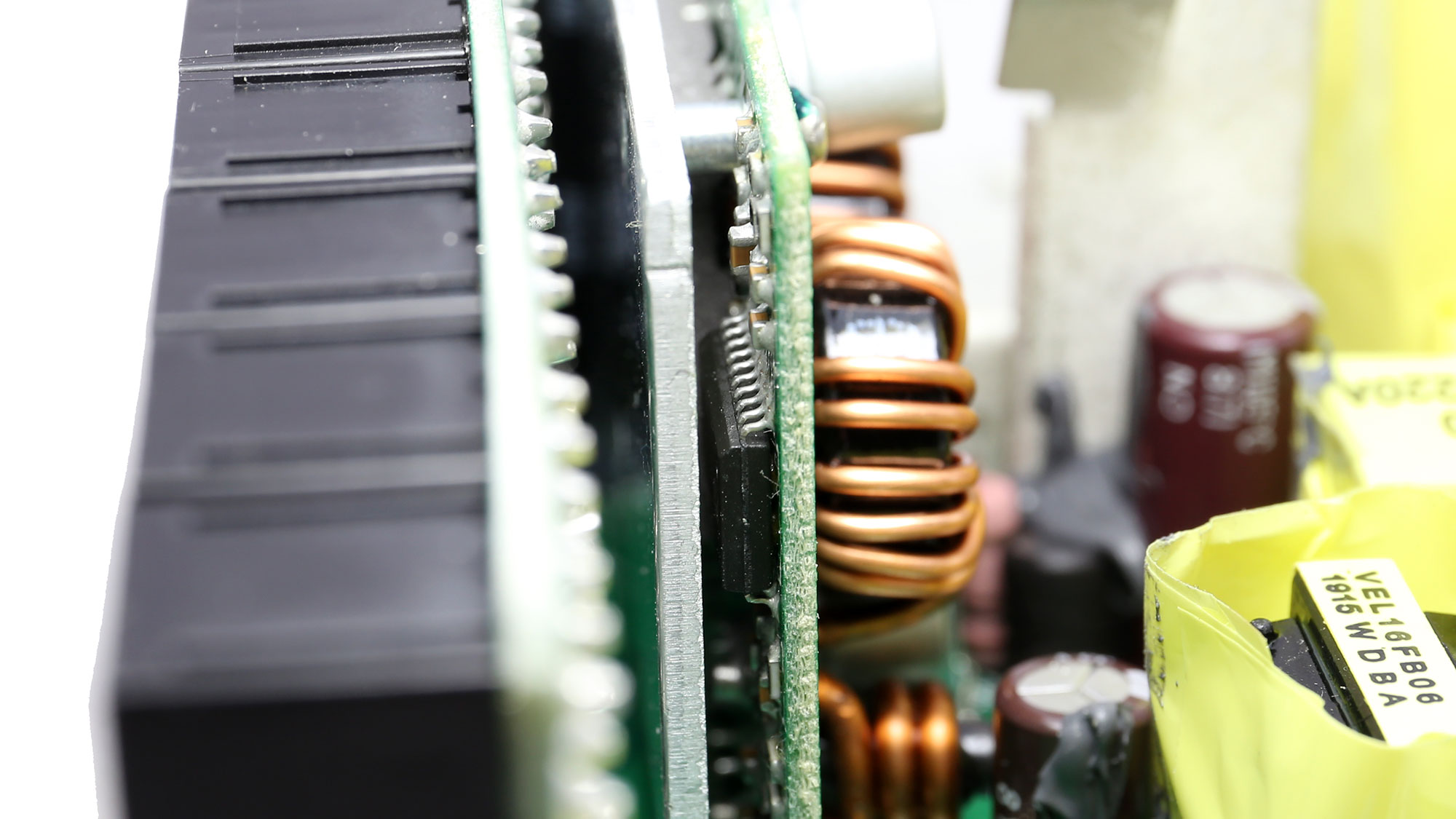
All FETs that handle the +12V rail are installed on the solder side of the main PCB. The two heat sinks right above them, on the top side of the PCB, help in cooling down those FETs. Finally, the minor rails are handled by a couple of DC-DC converters.
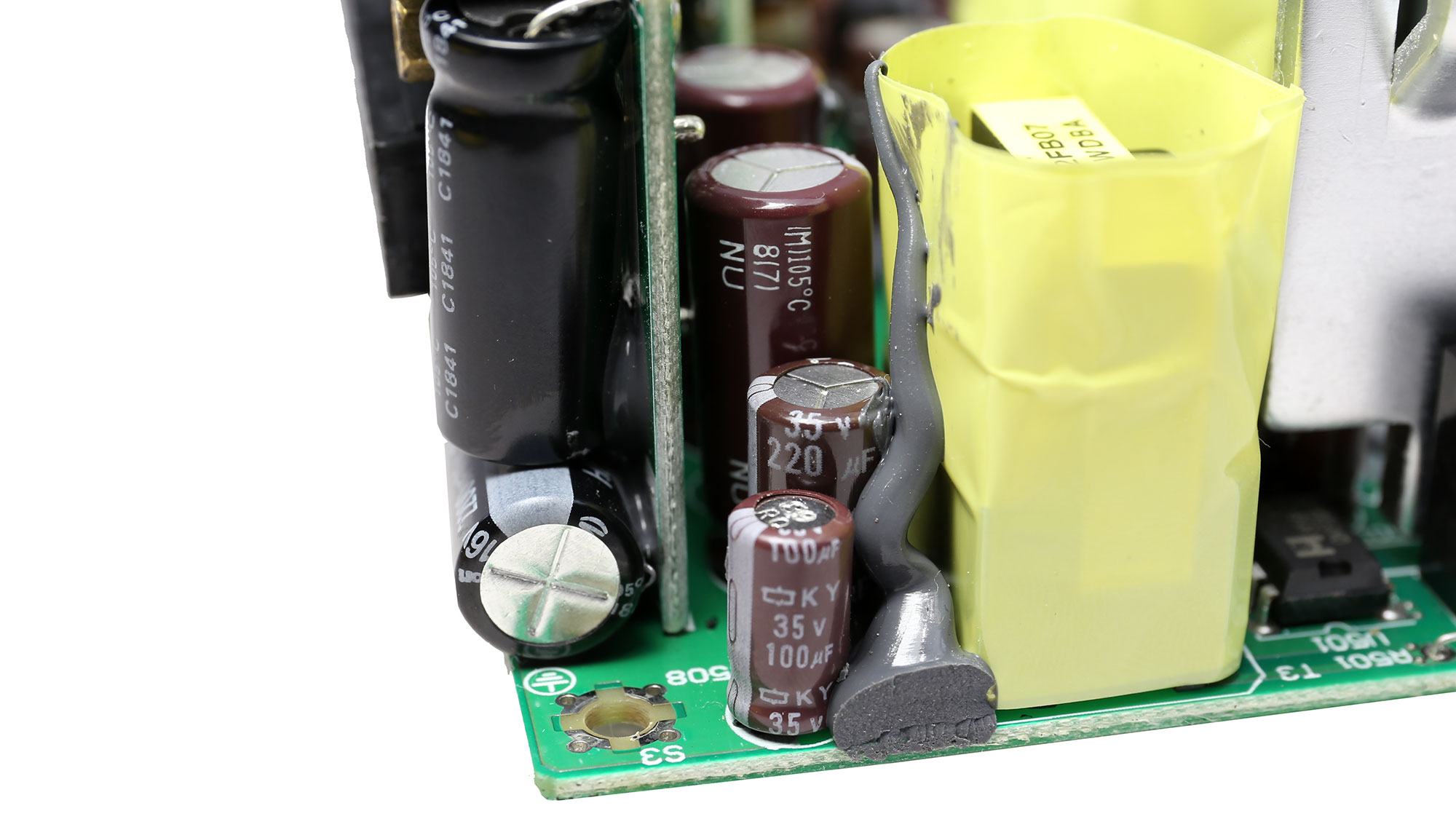
Filtering caps
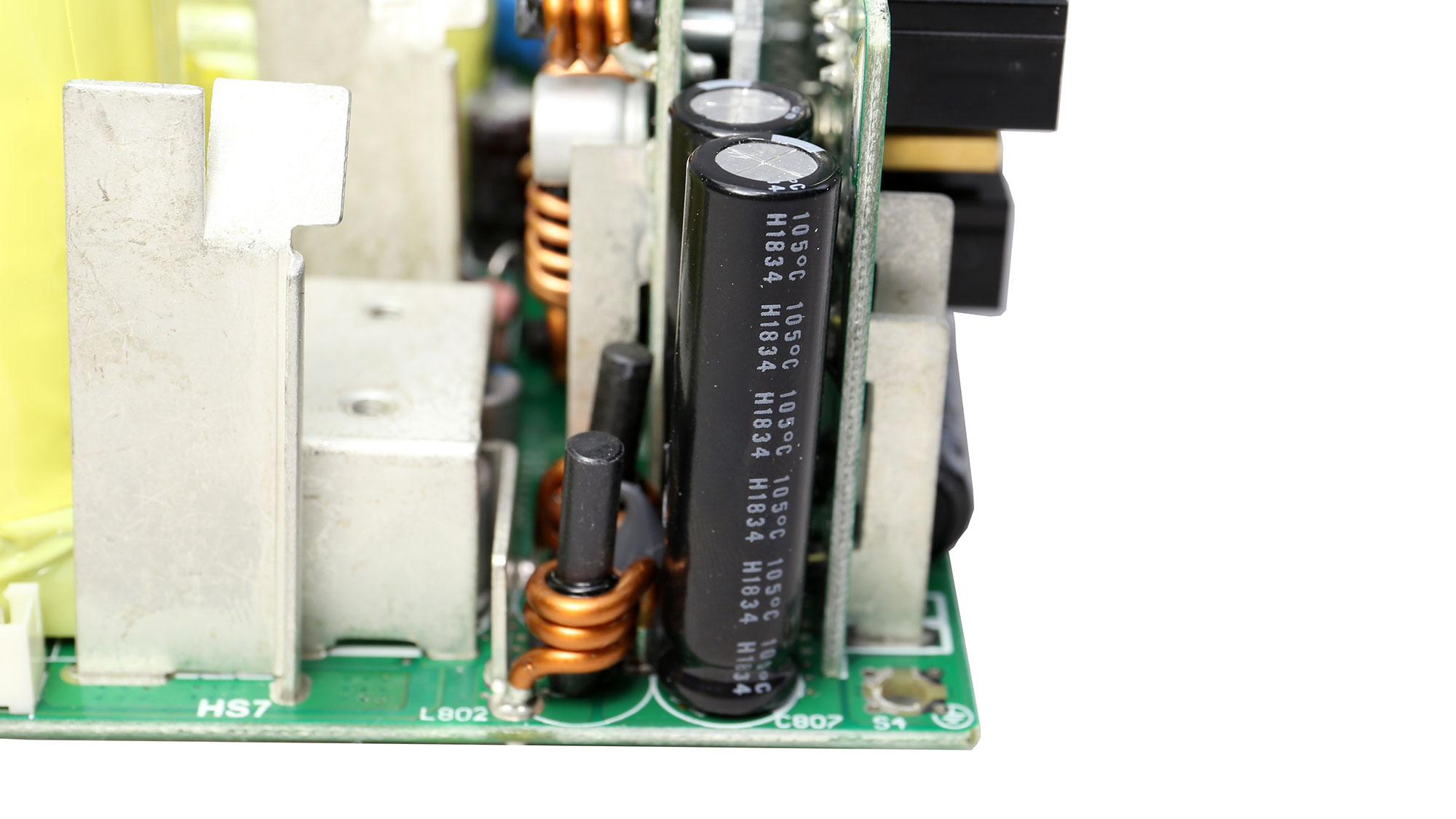
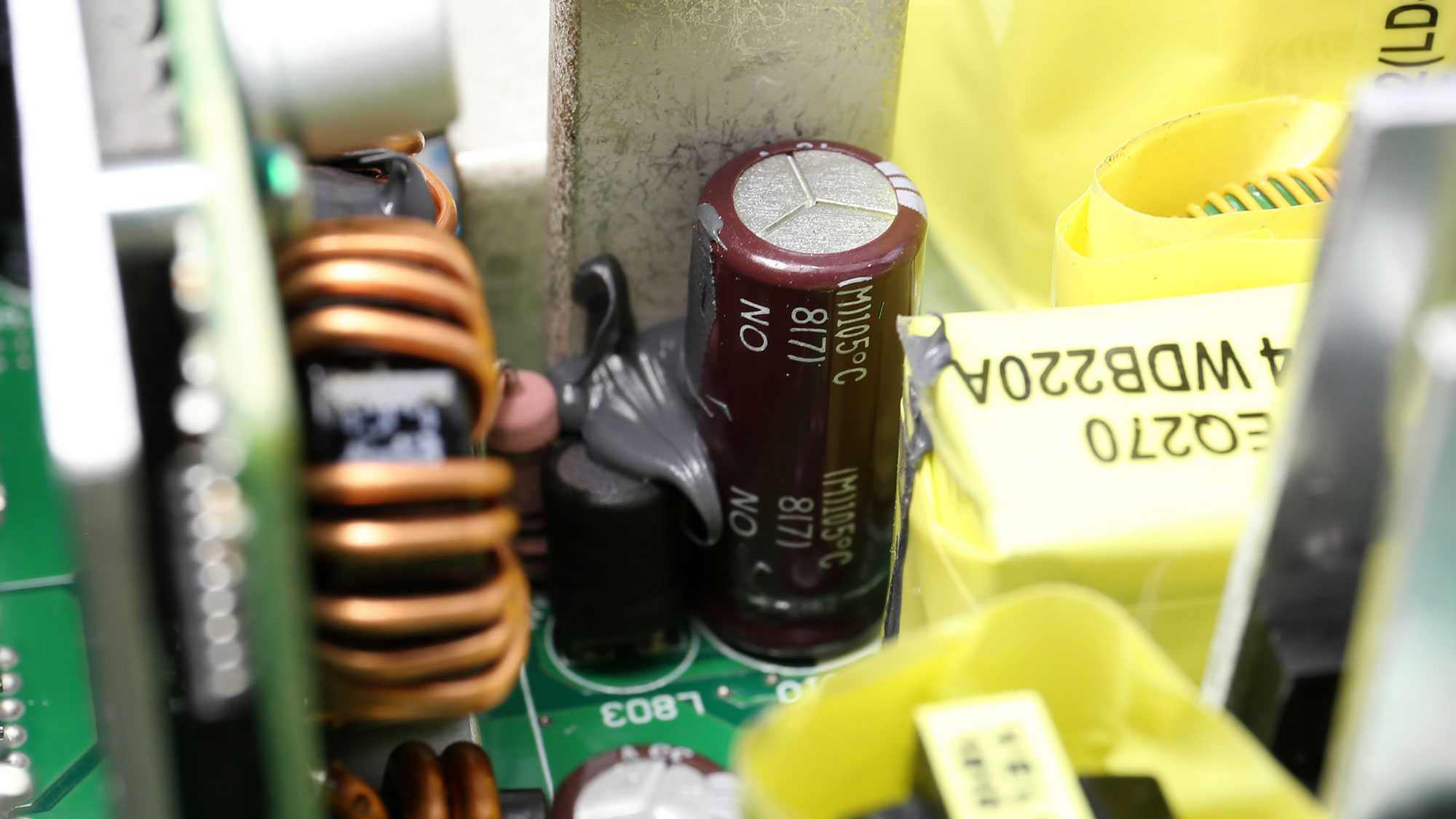
The filtering caps are of good quality since most of them belong to mid and higher-end lines. Besides electrolytic caps, many polymers are also used.

5VSB Circuit
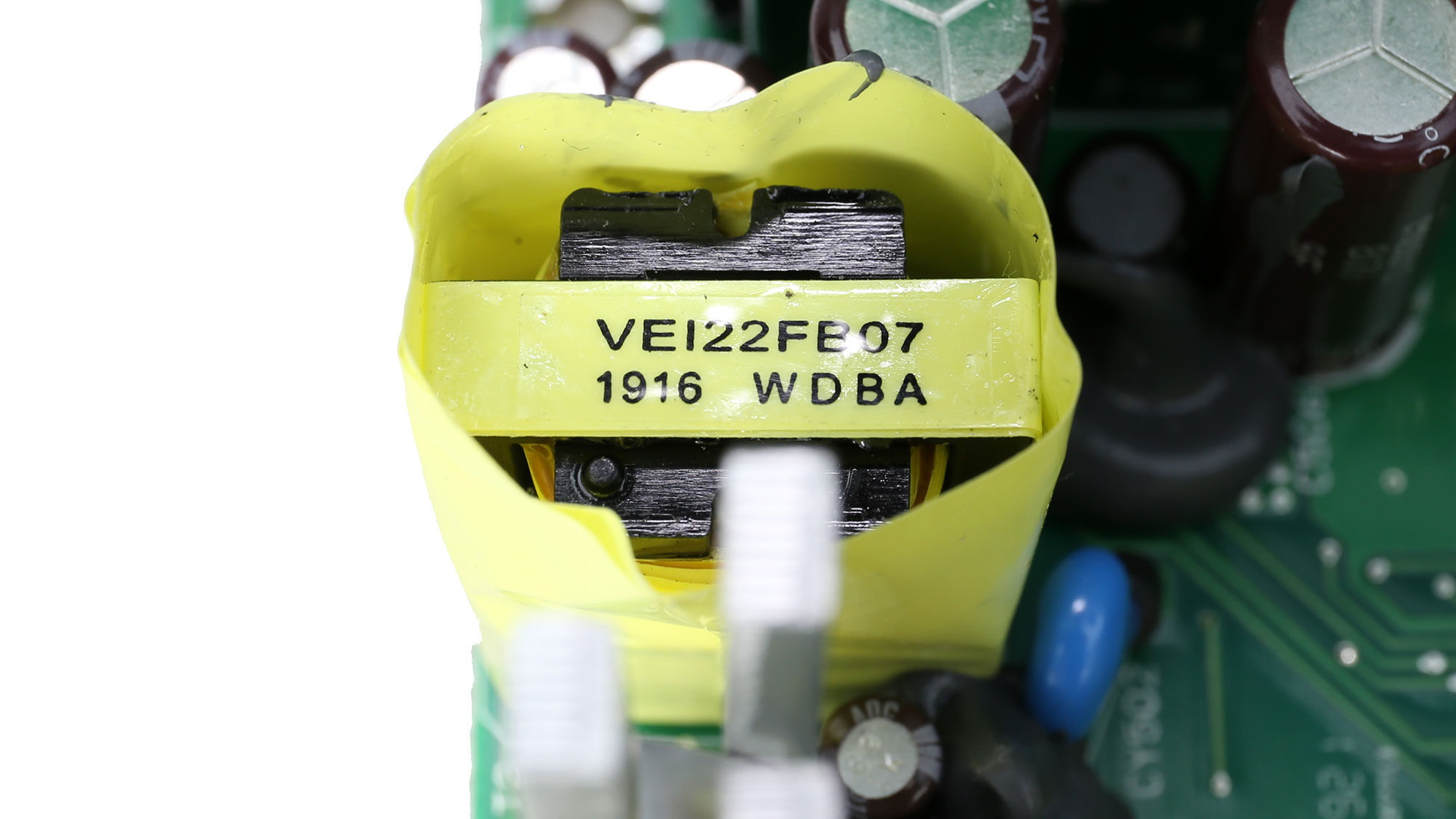
The 5VSB circuit uses an Excelliance standby PWM controller and the rectifier, on its secondary side, is an SBR.
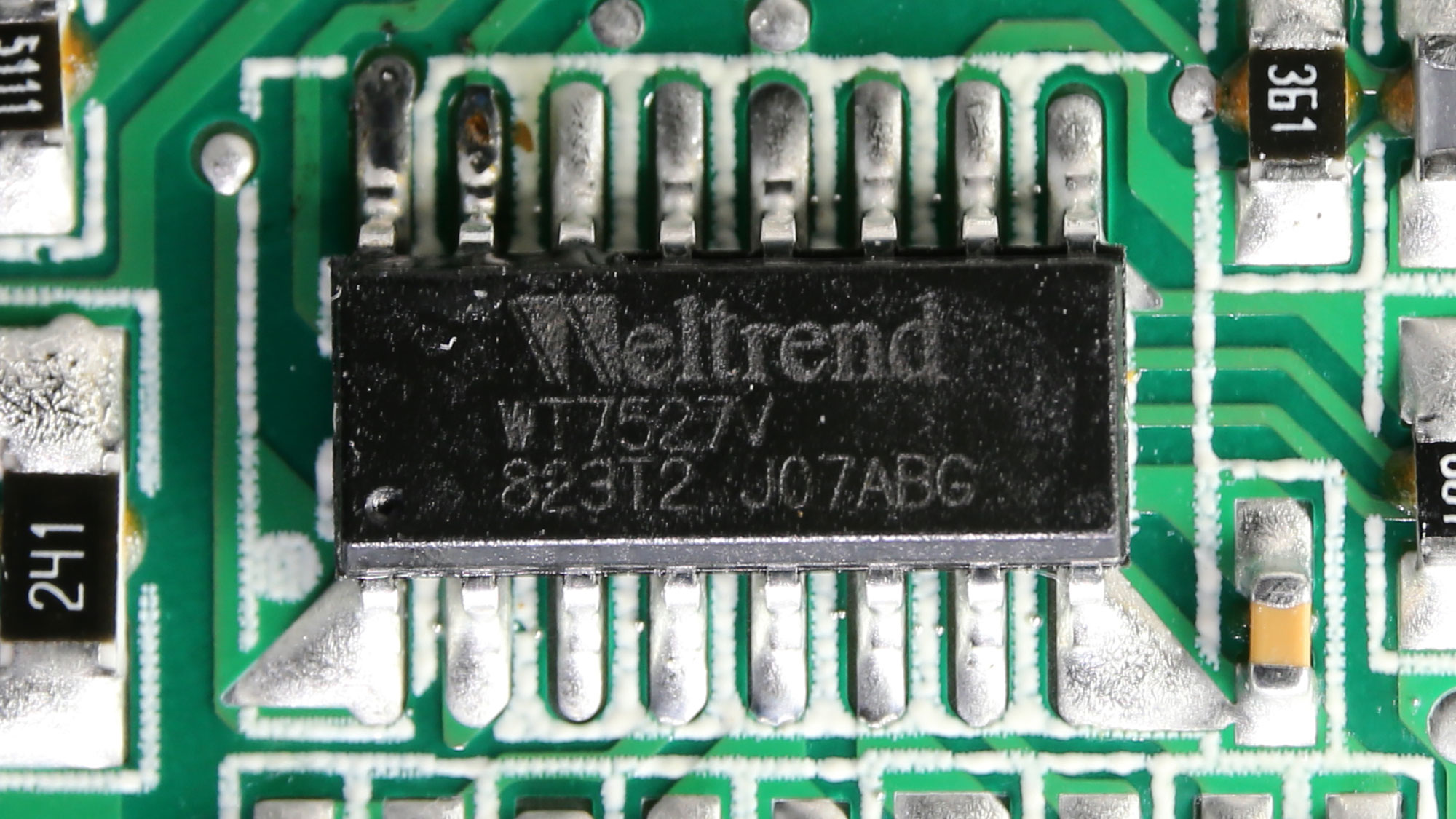
The supervisor IC is a Weltrend WT7527V.
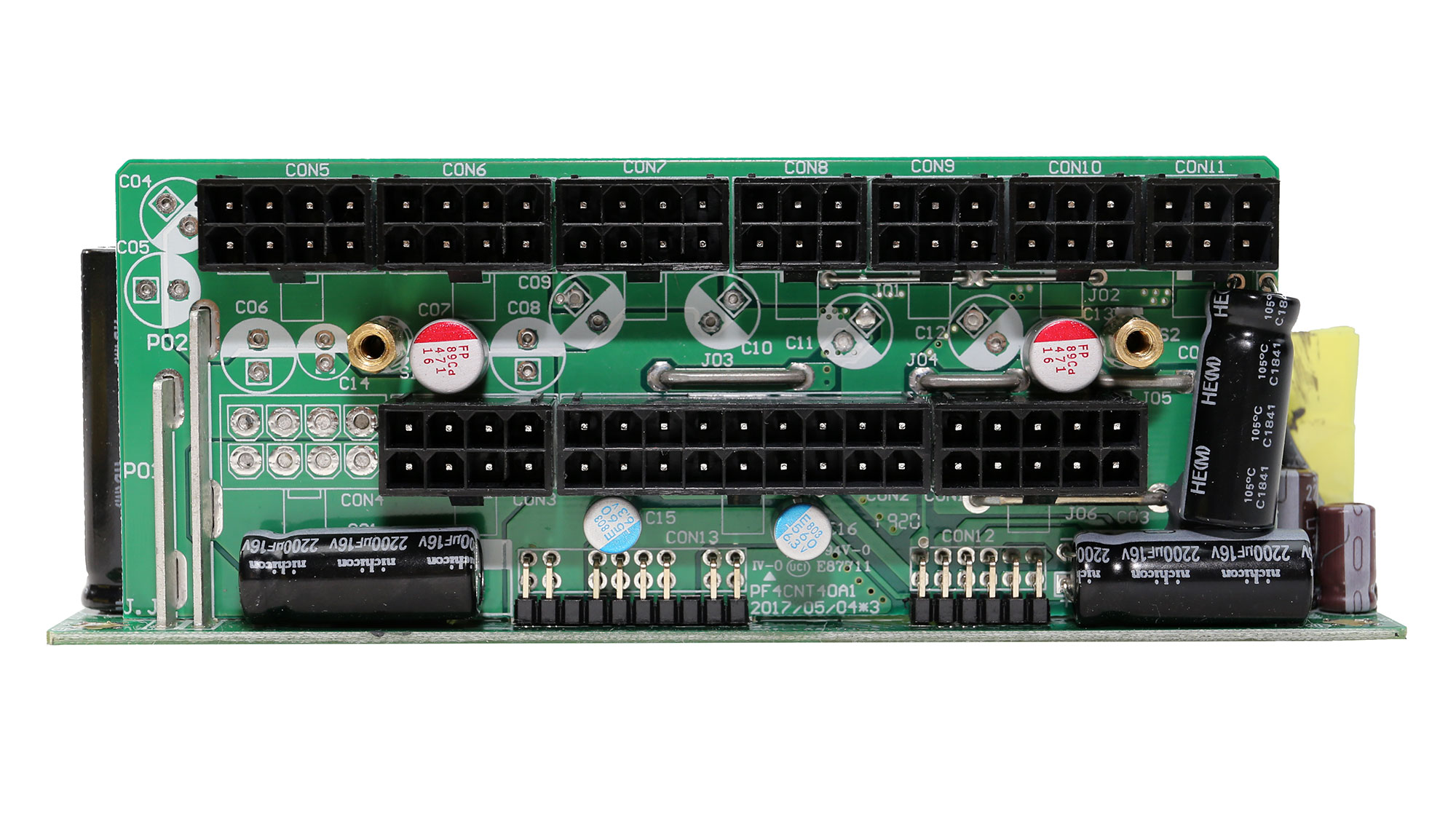
Modular board front
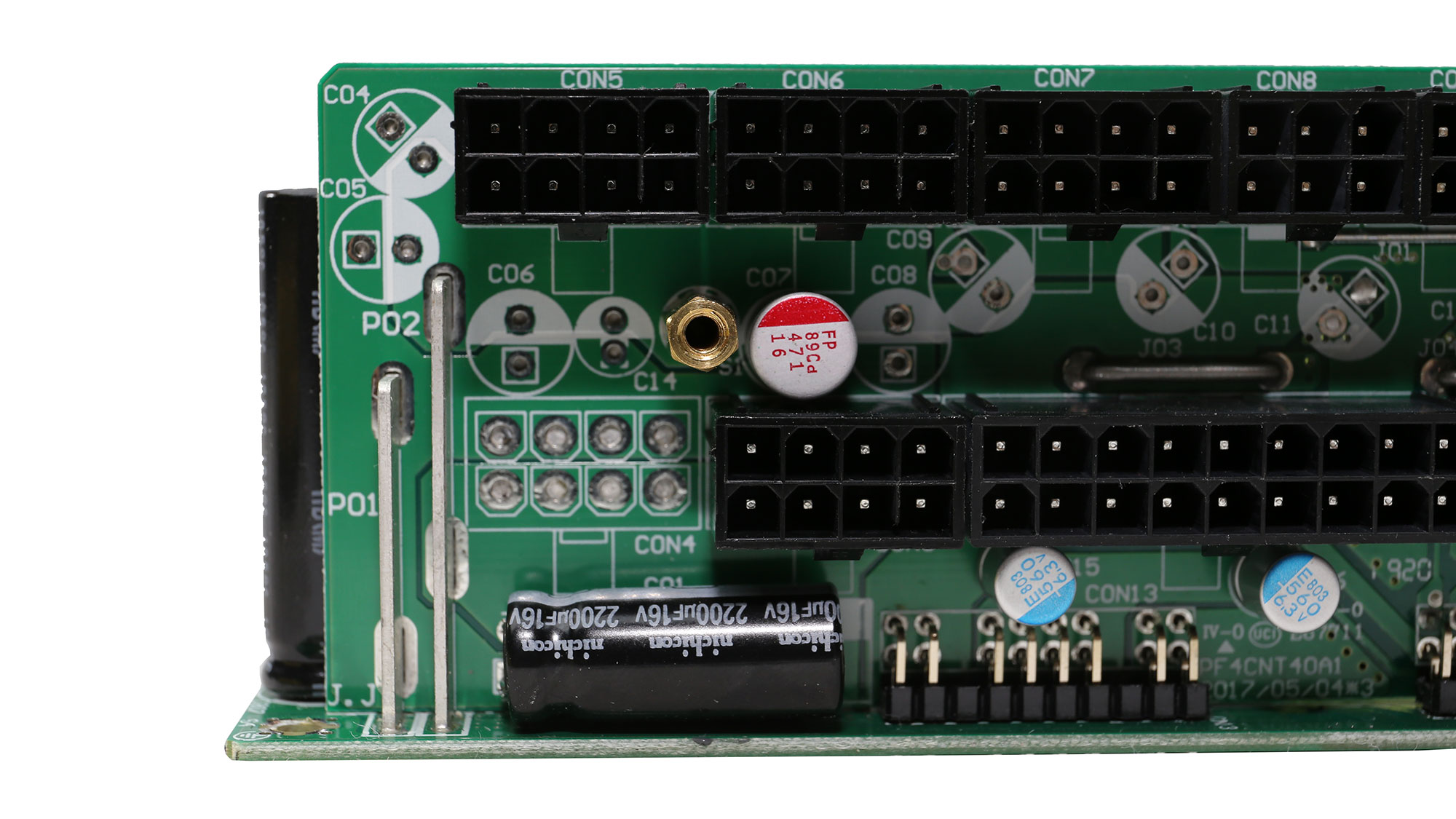

There is space for much more polymer caps on the modular PCB, but this would increase the cost without reason since the ripple suppression is already quite good.
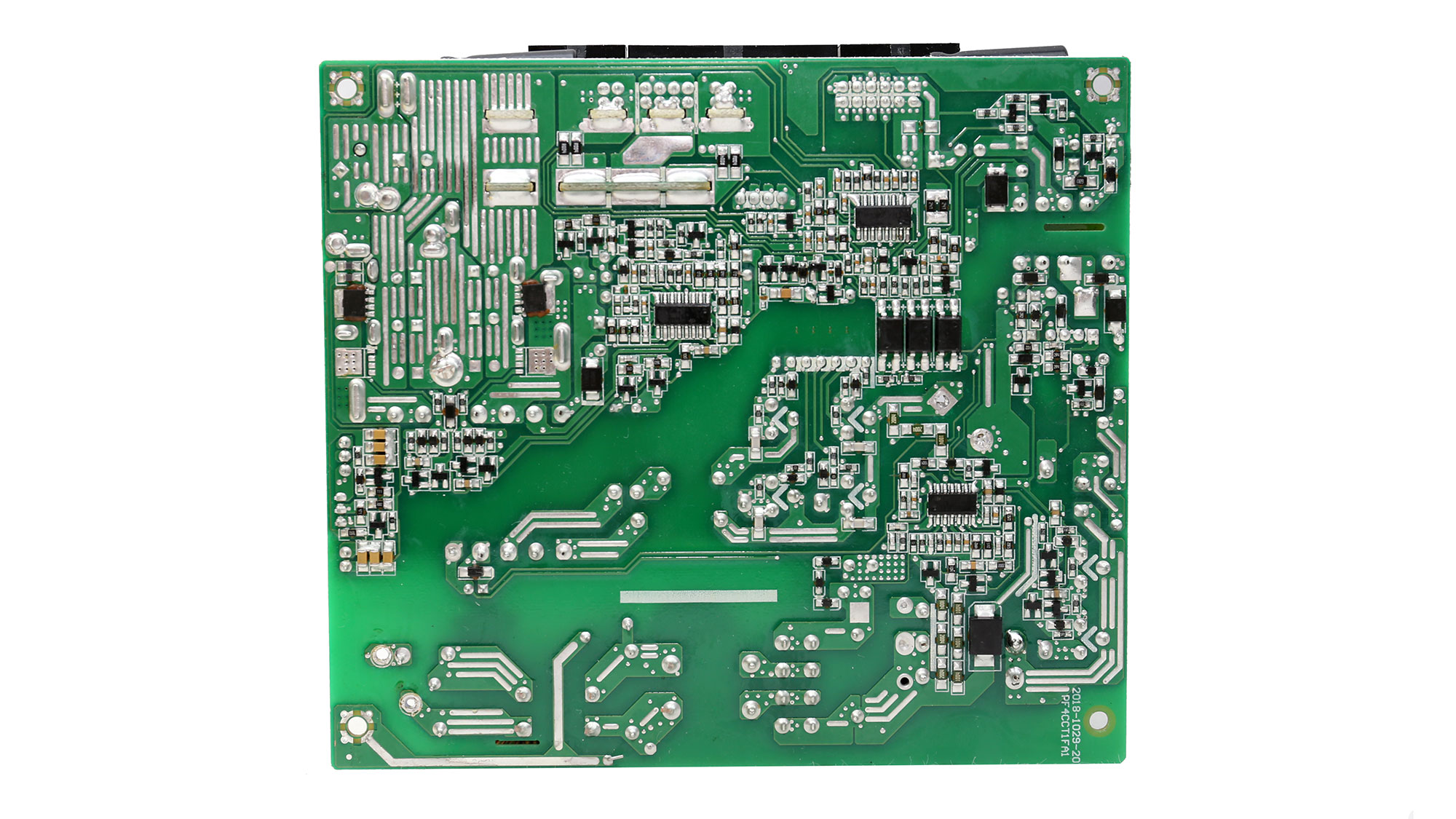
Soldering quality

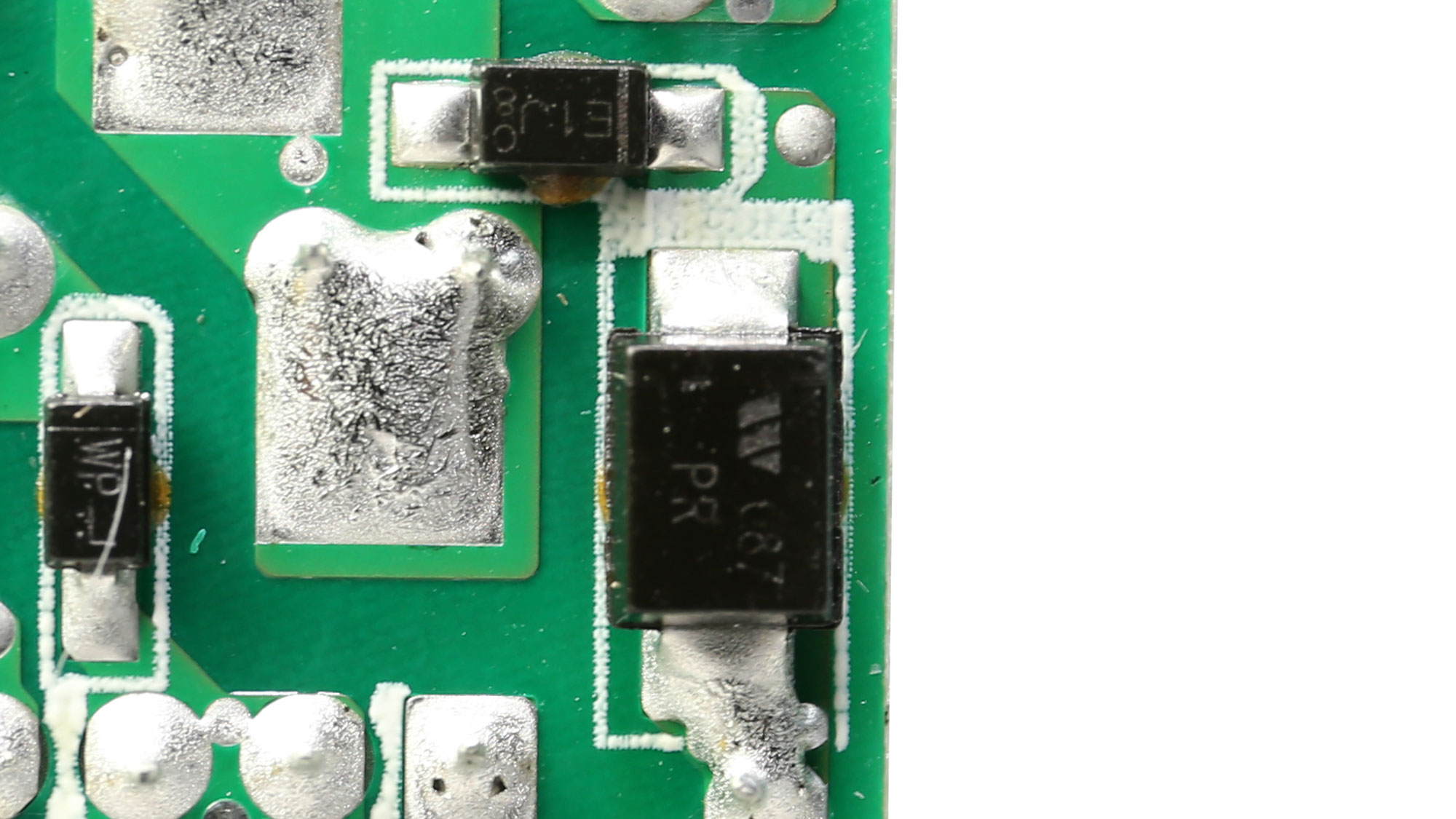
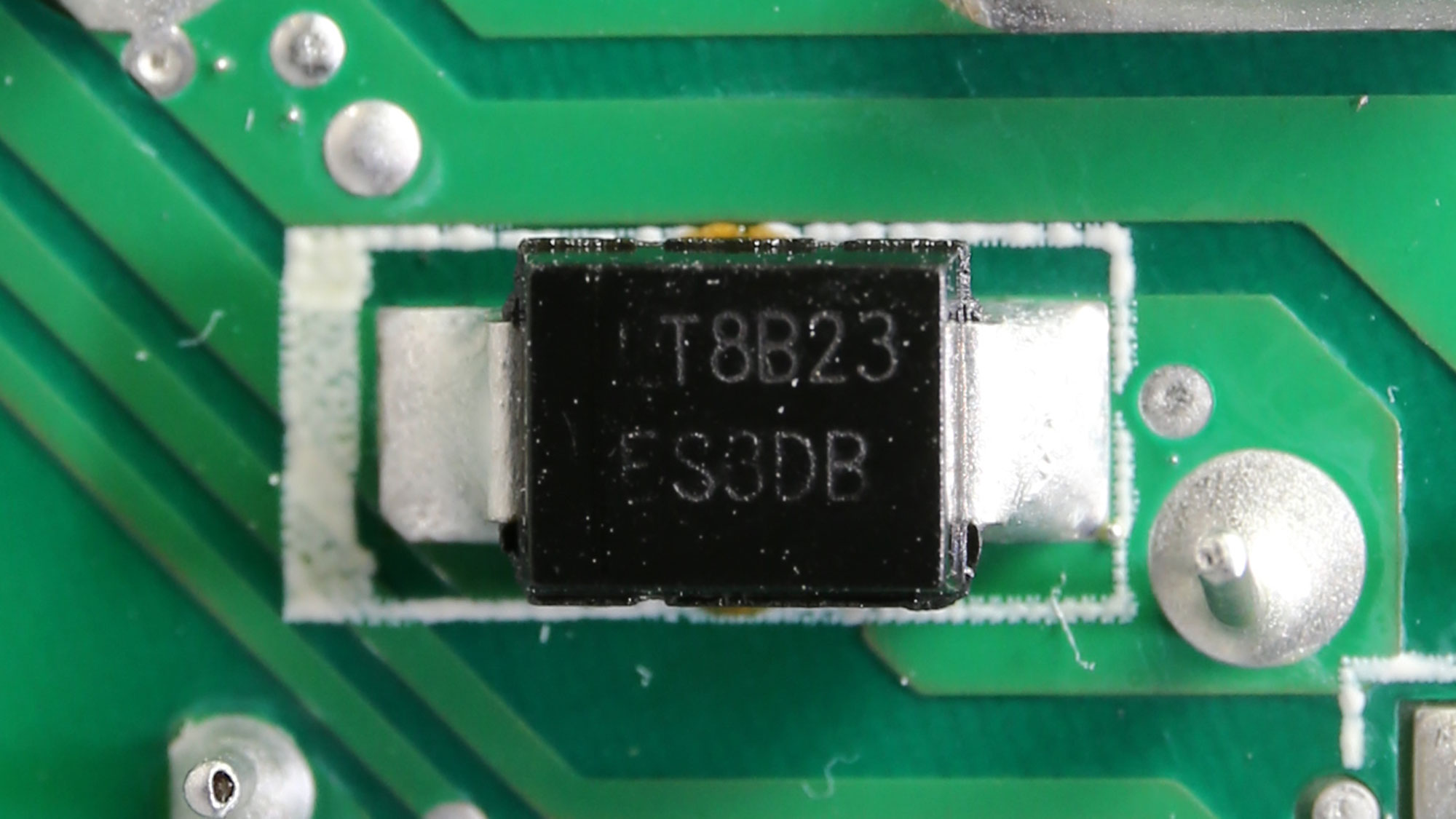
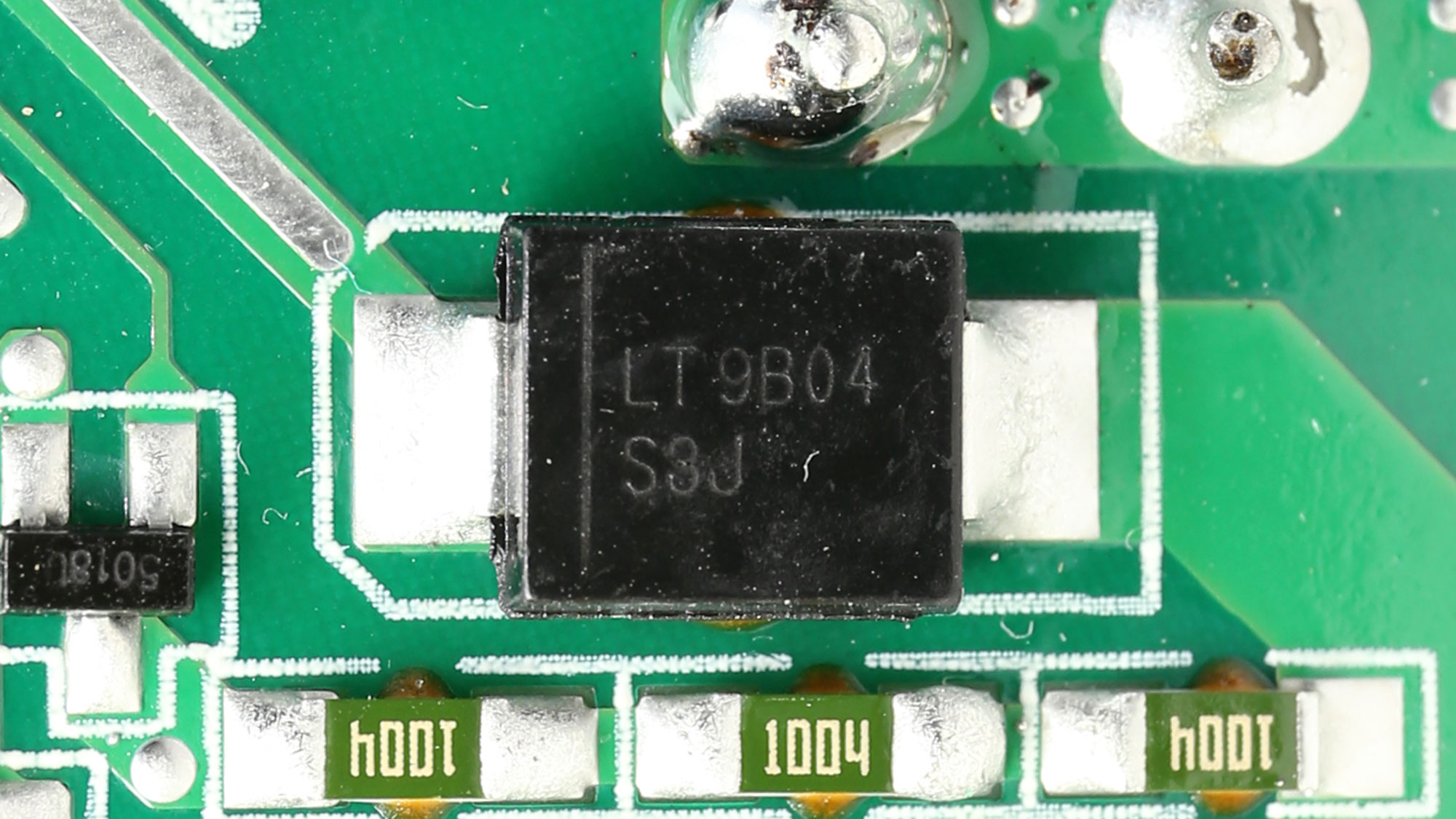
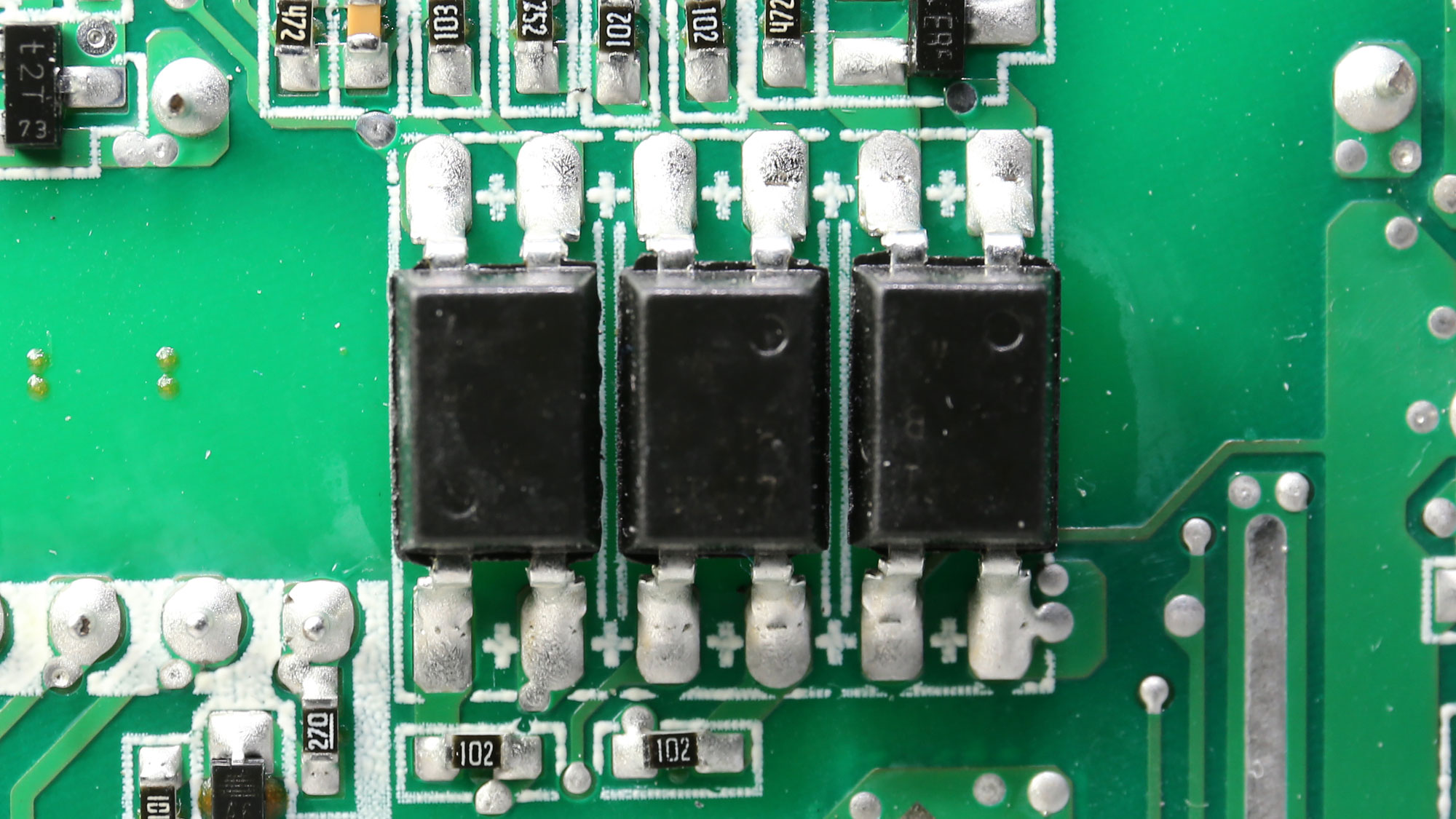
The main PCB has good soldering quality.

Cooling fan
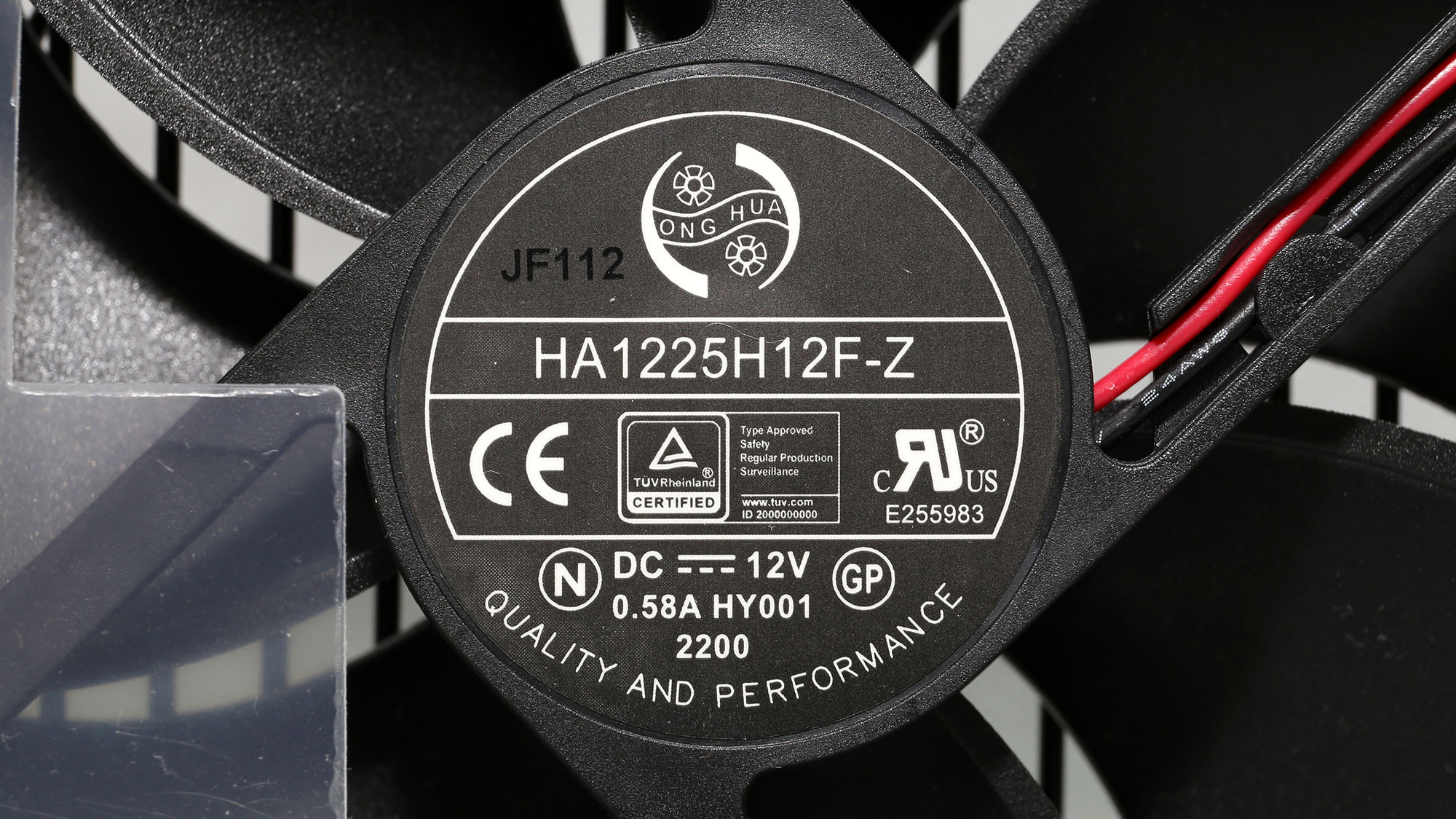
The cooling fan is by Hong Hua, and it uses a fluid dynamic bearing. This is a good fan, which will live for quite long if you don't expose it to harsh conditions (40 degrees Celsius) for prolonged periods.
MORE: Best Power Supplies
MORE: How We Test Power Supplies
MORE: All Power Supply Content
Current page: Specifications and Part Analysis
Next Page Load Regulation, Hold-Up Time, Inrush Current, Efficiency and Noise
Aris Mpitziopoulos is a contributing editor at Tom's Hardware, covering PSUs.